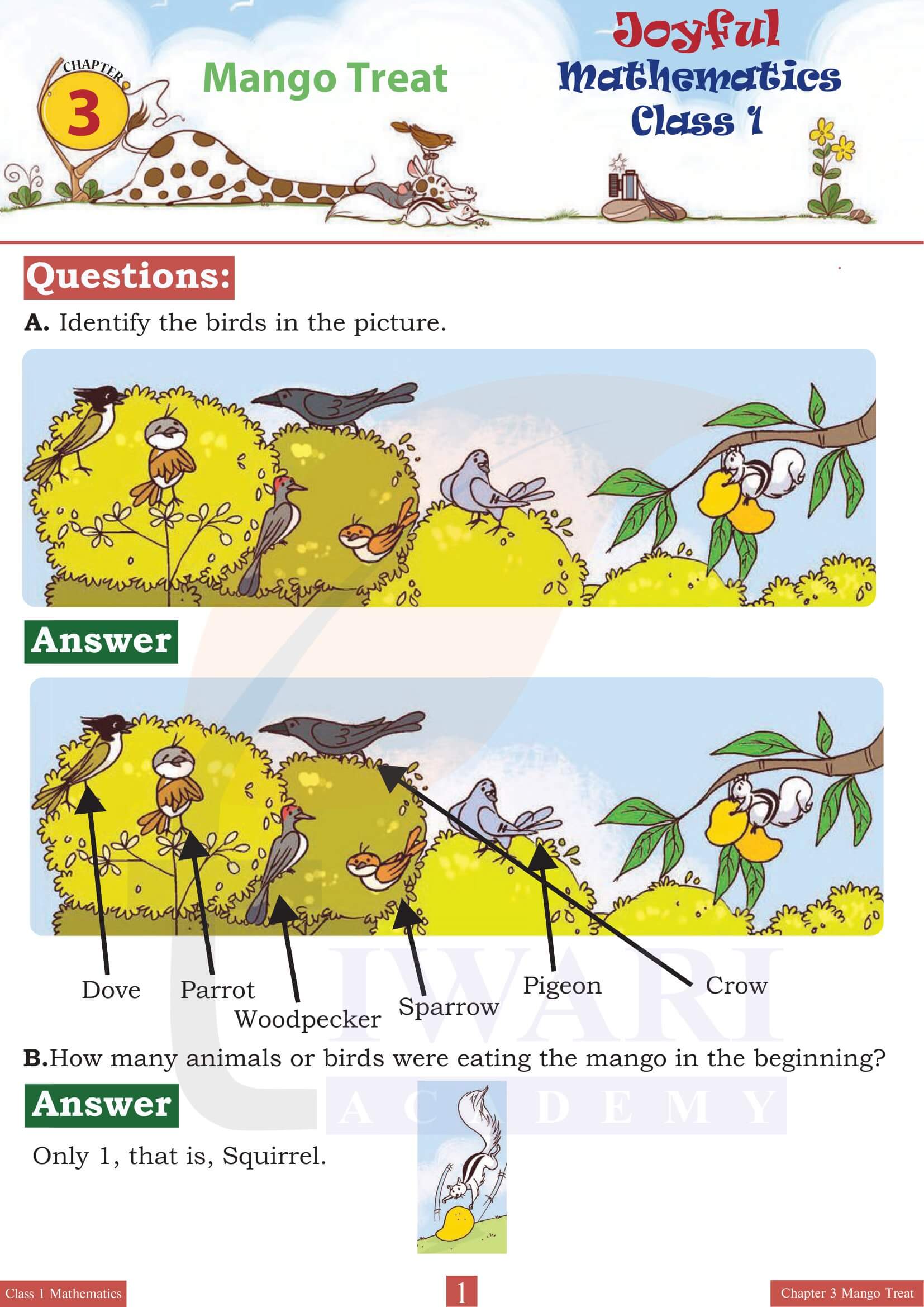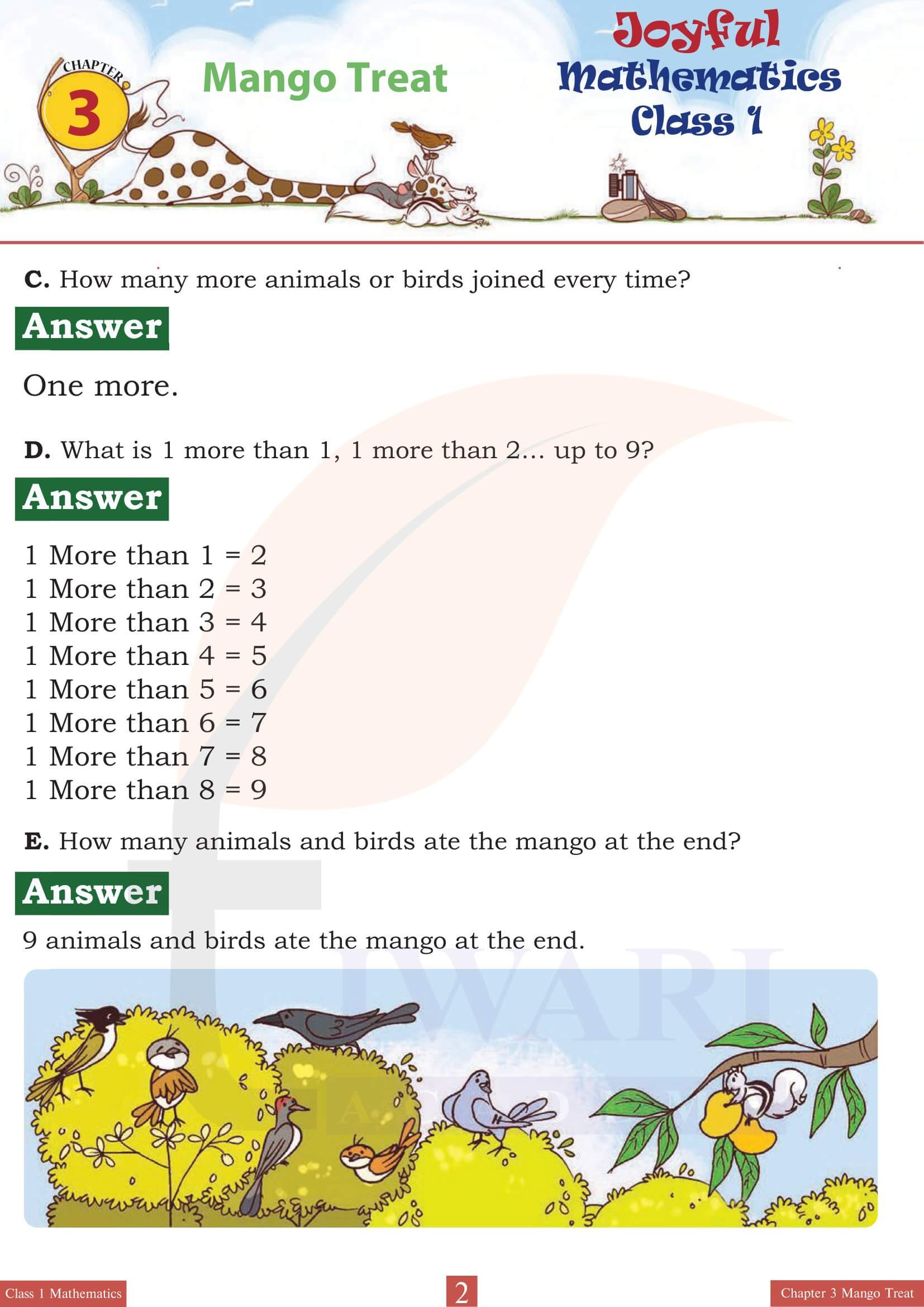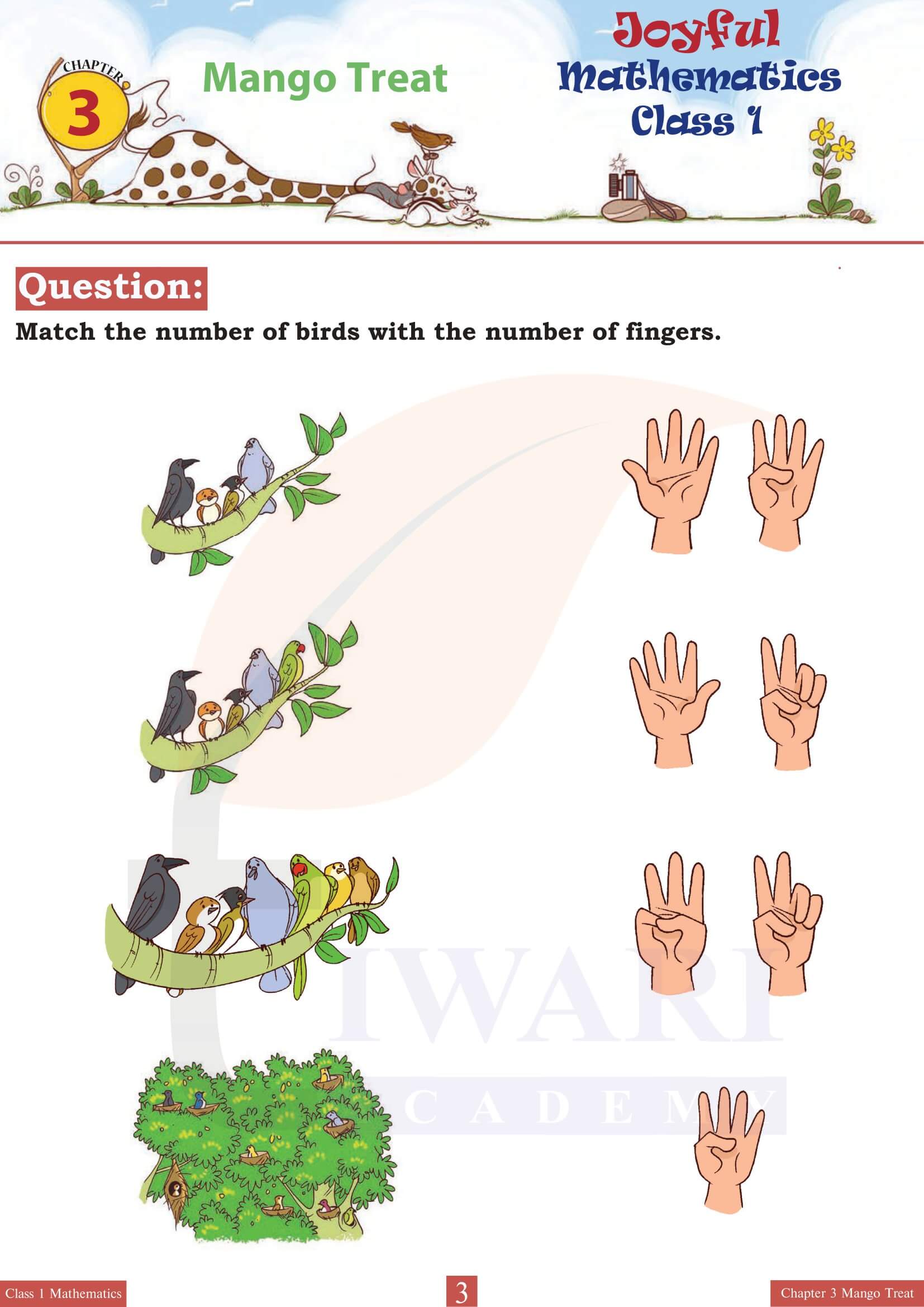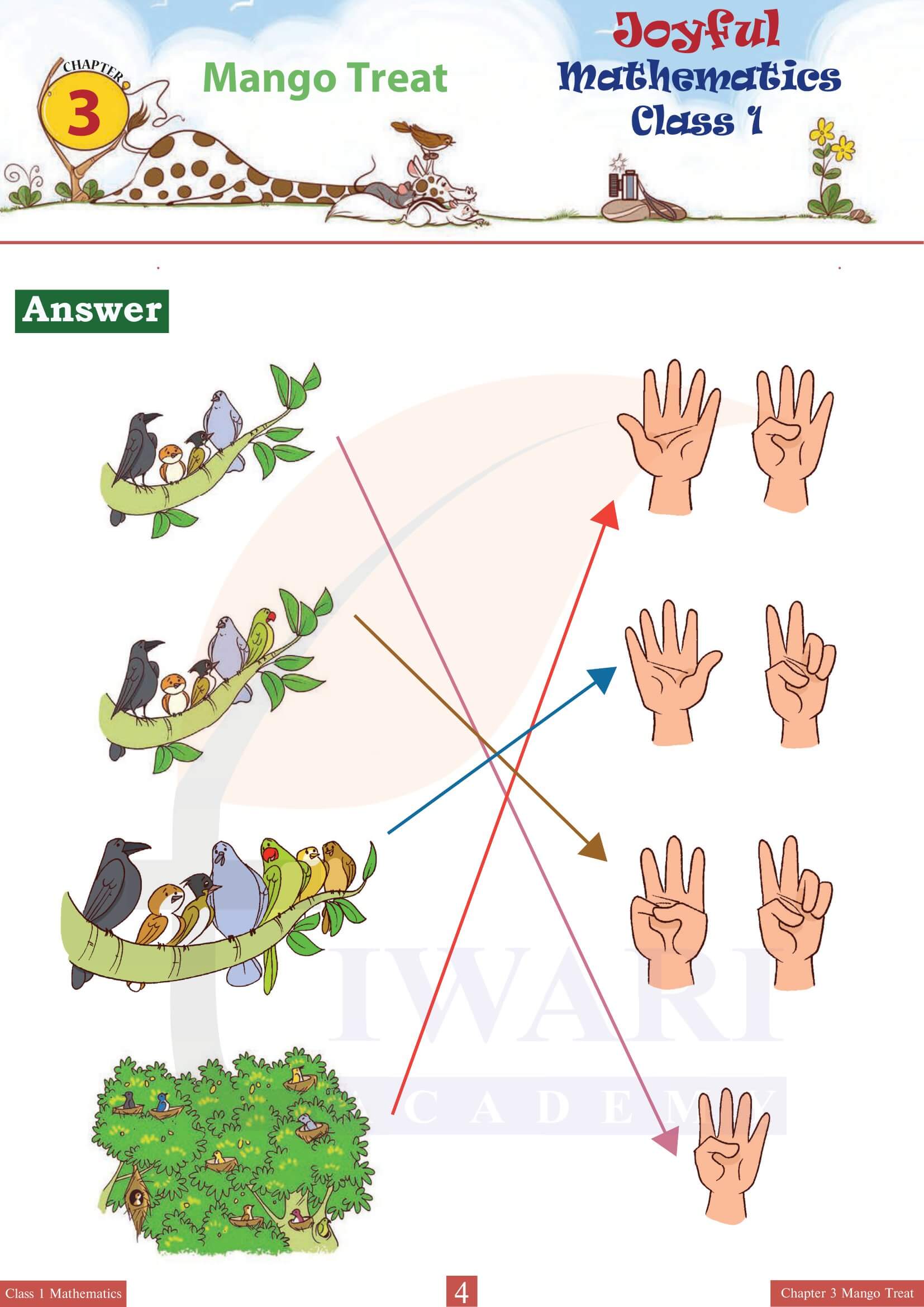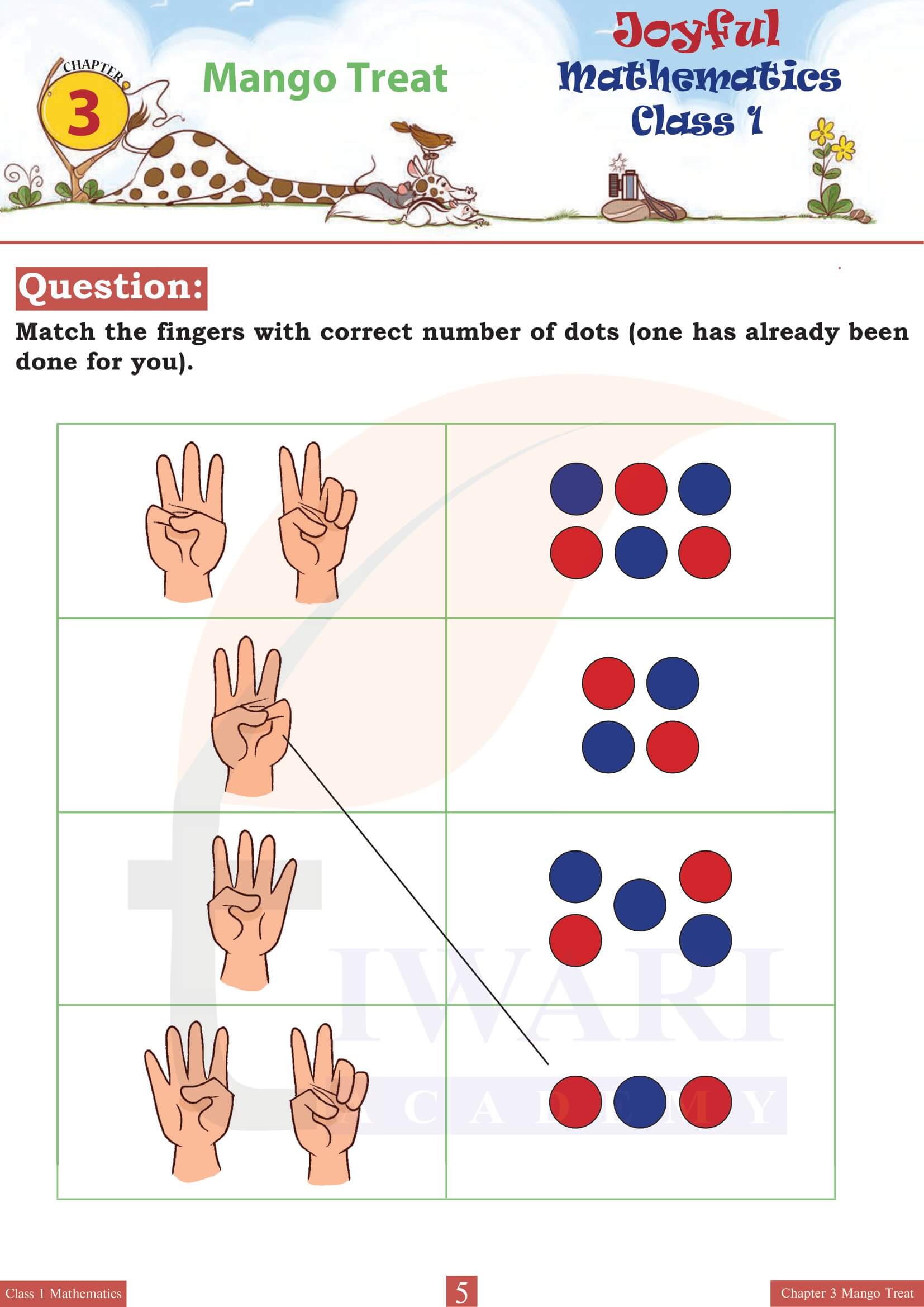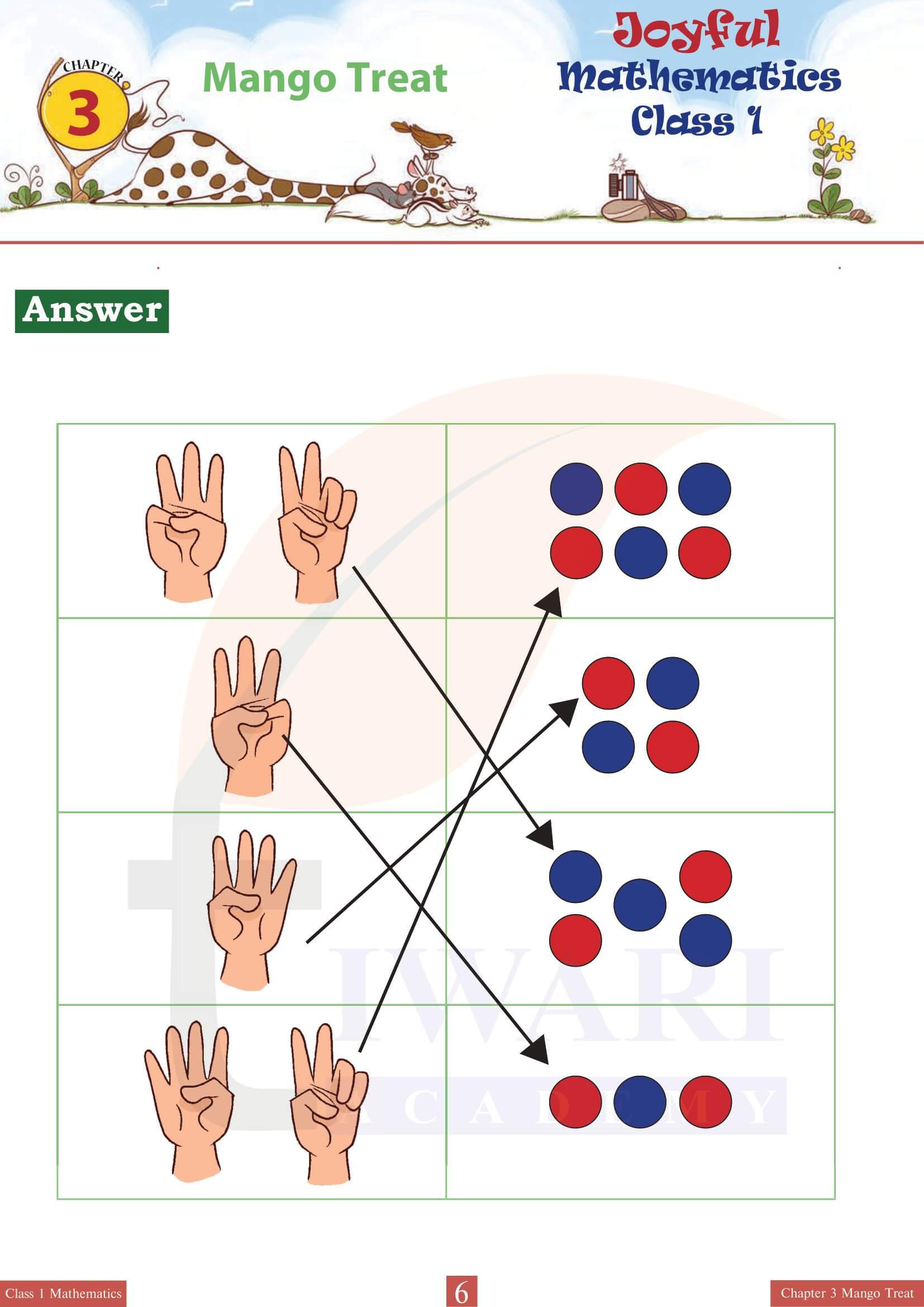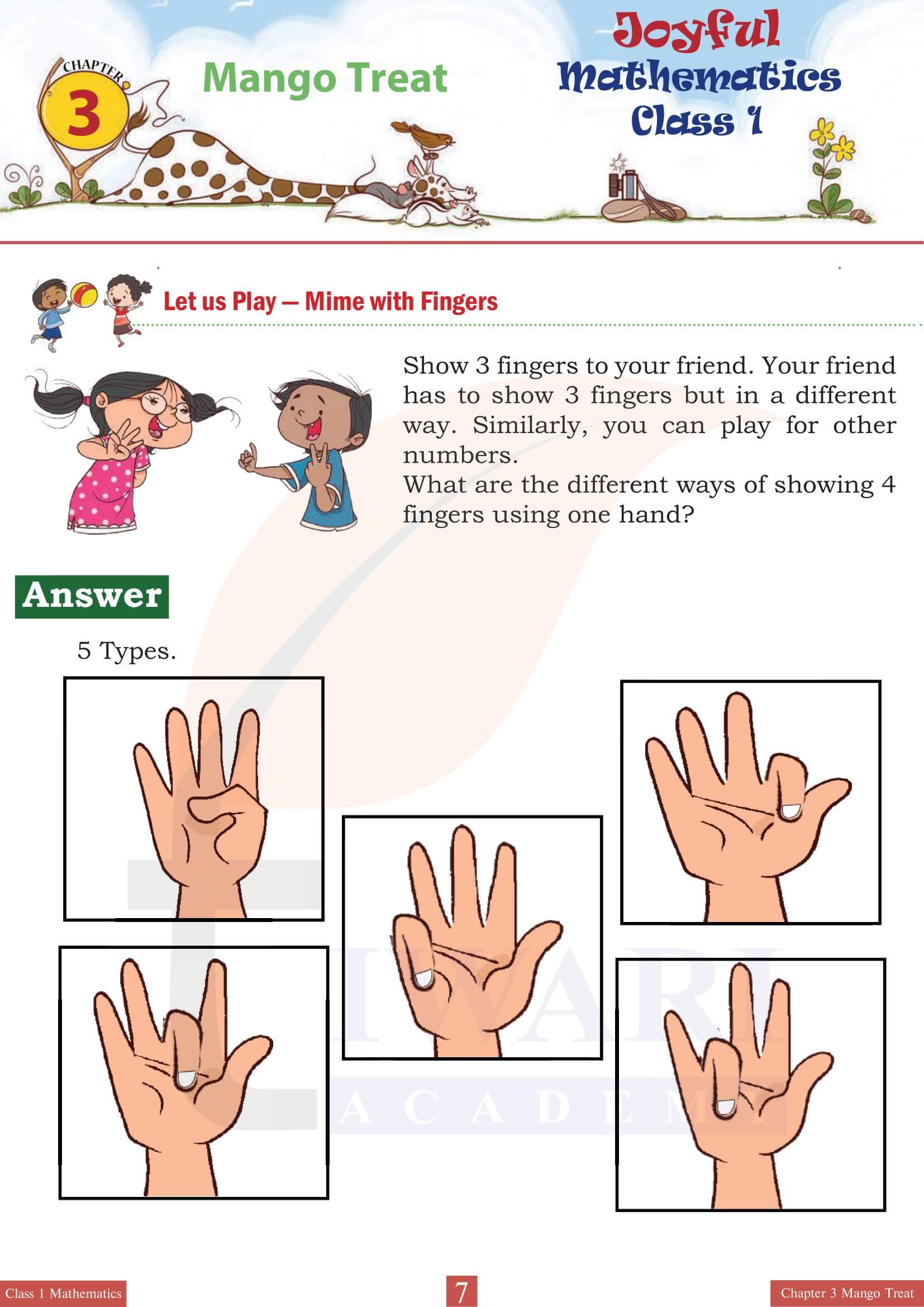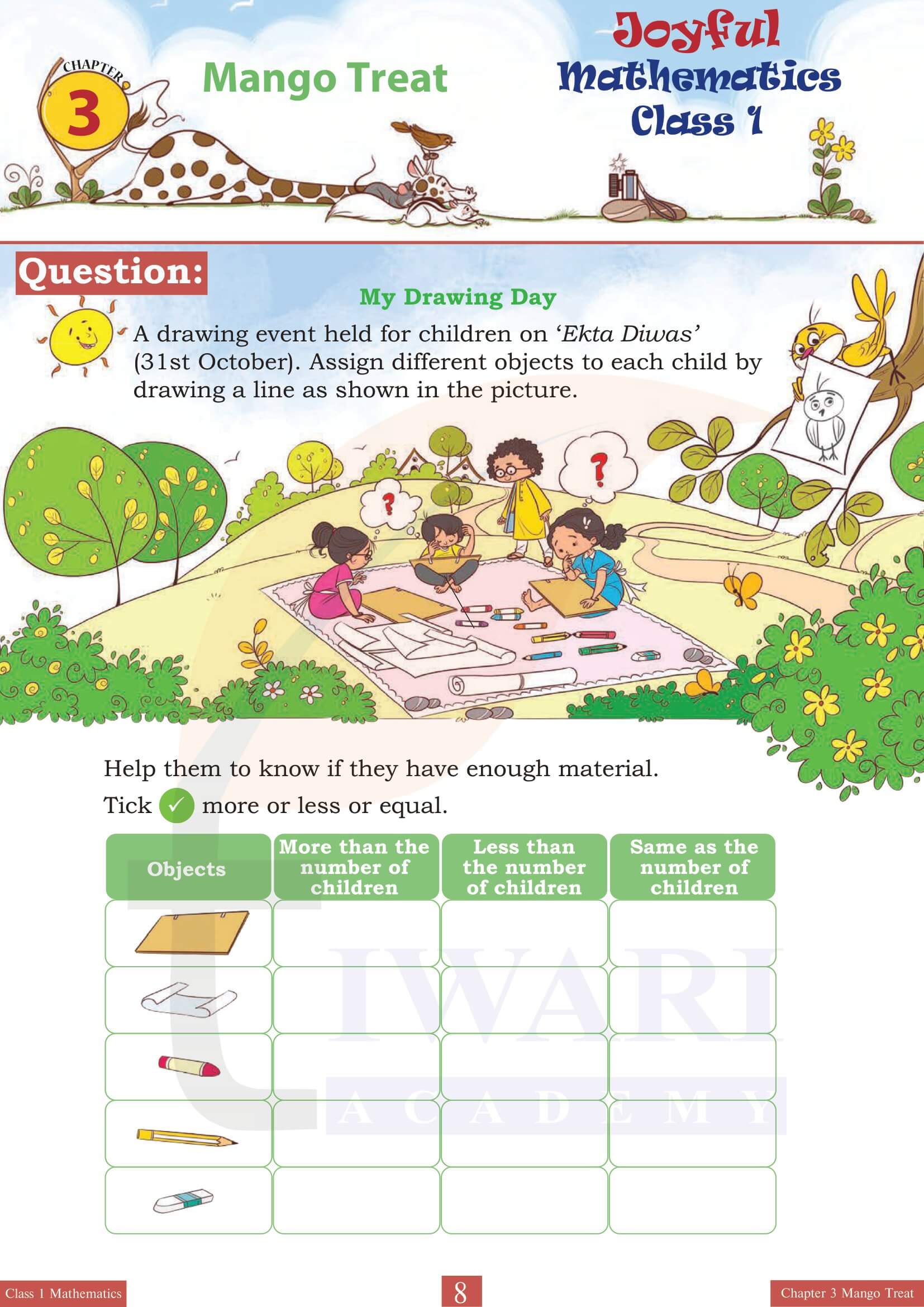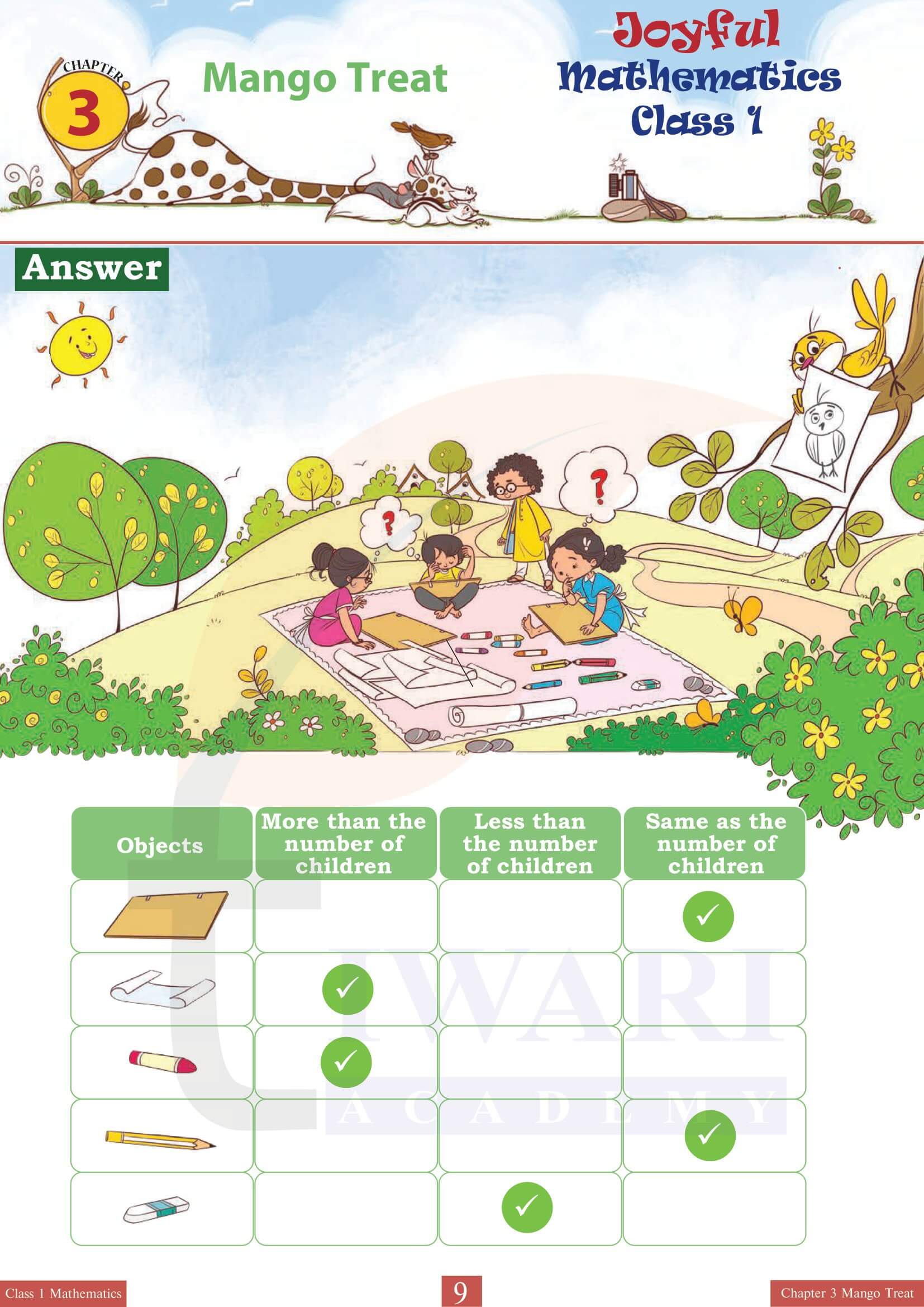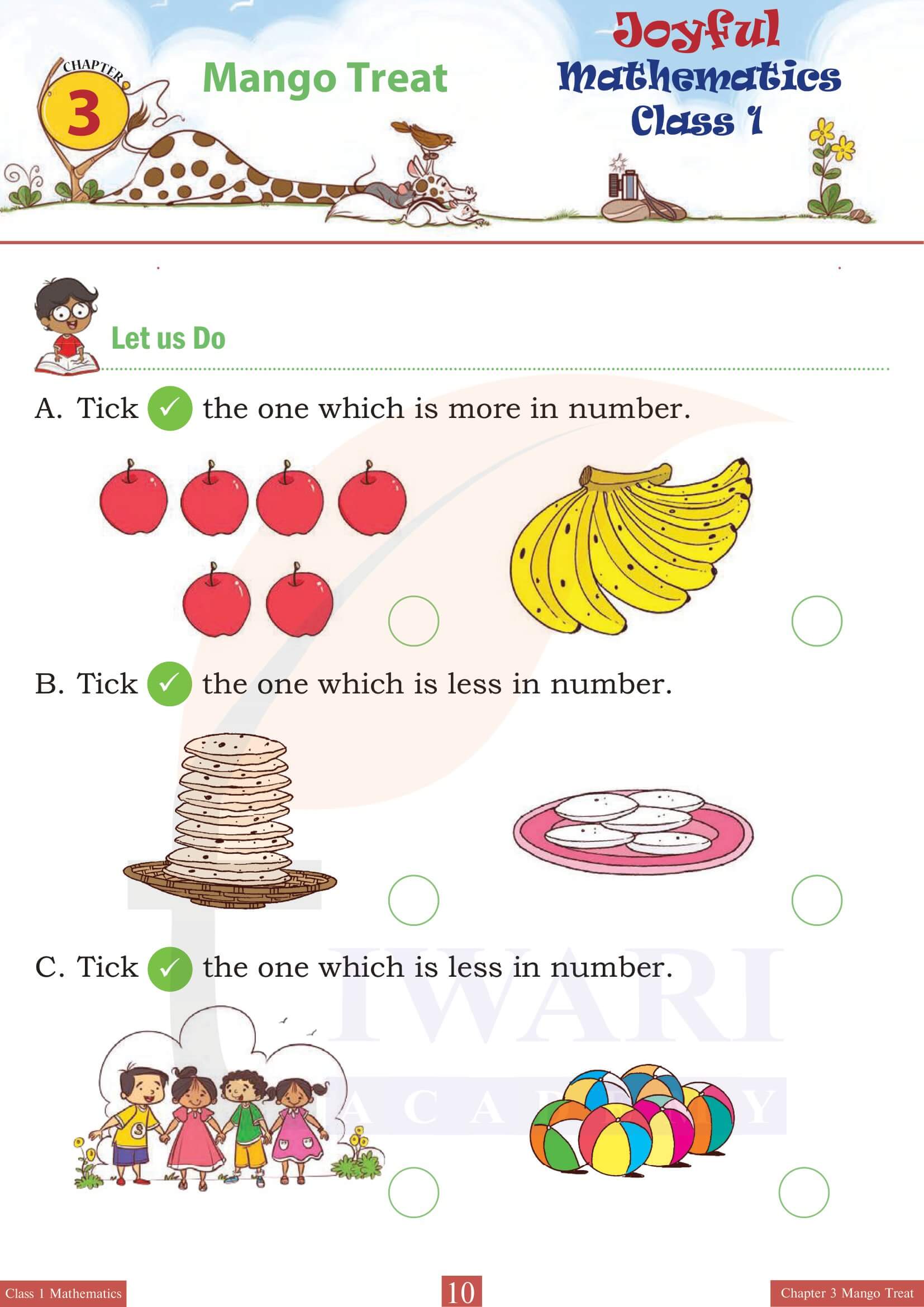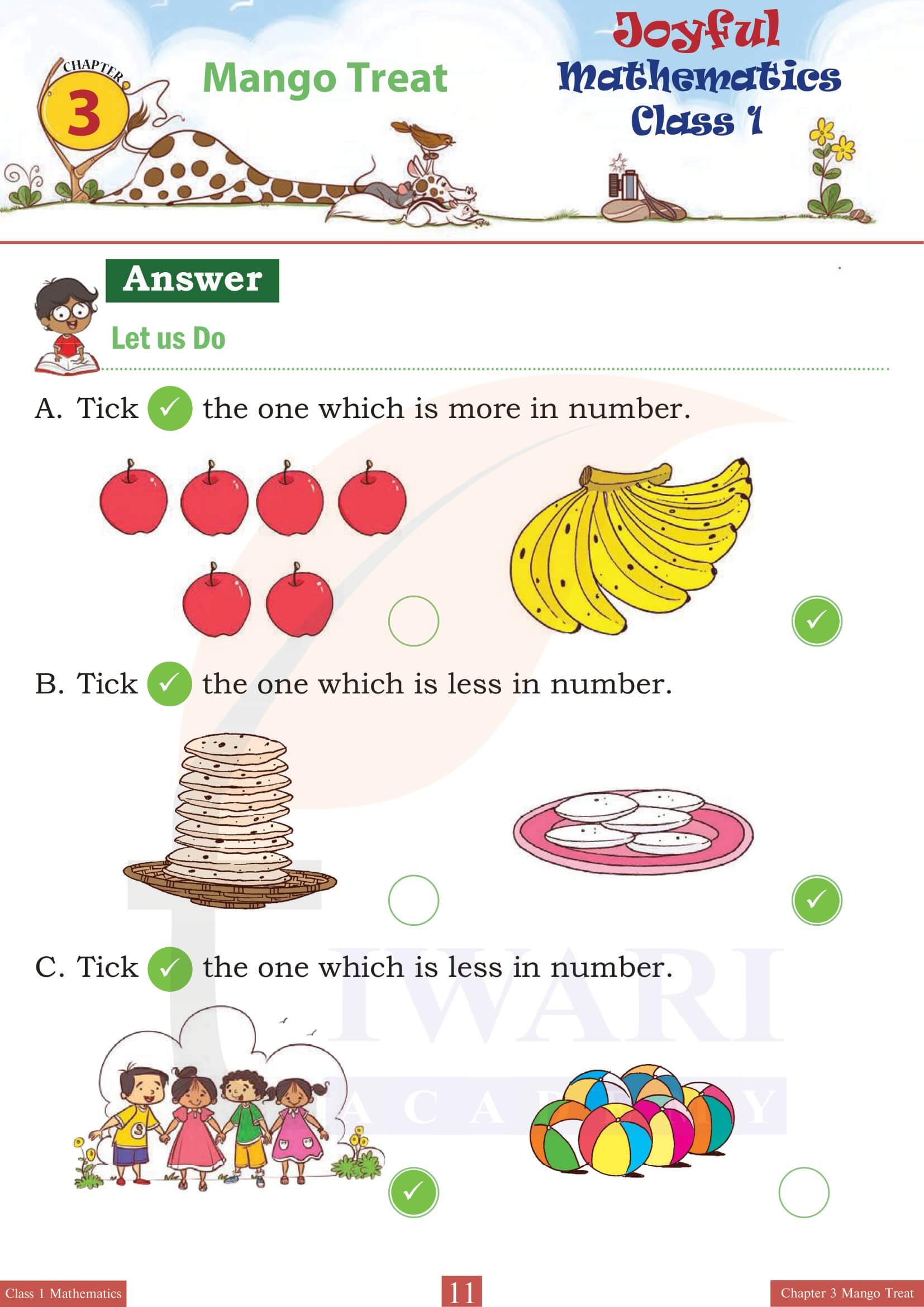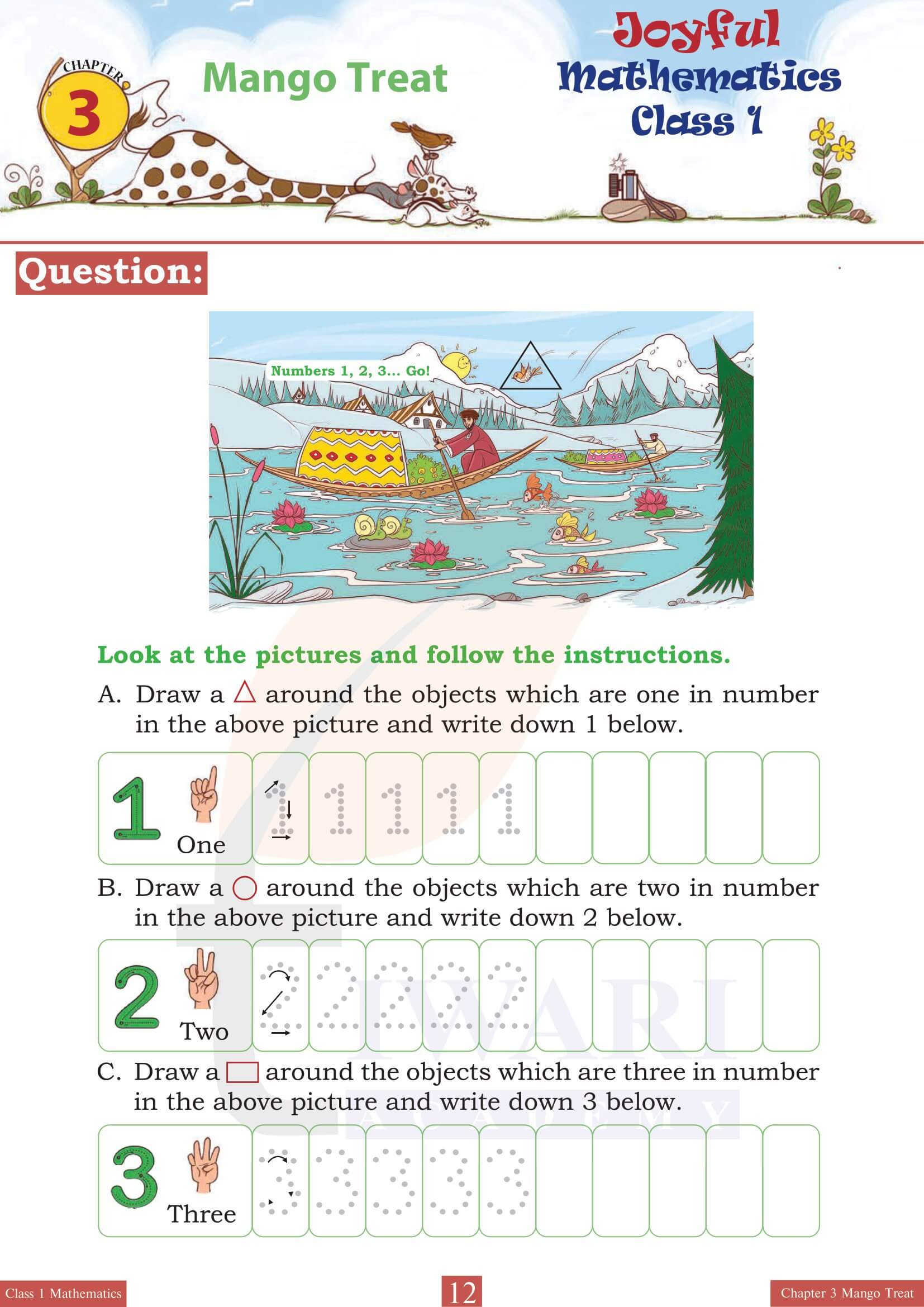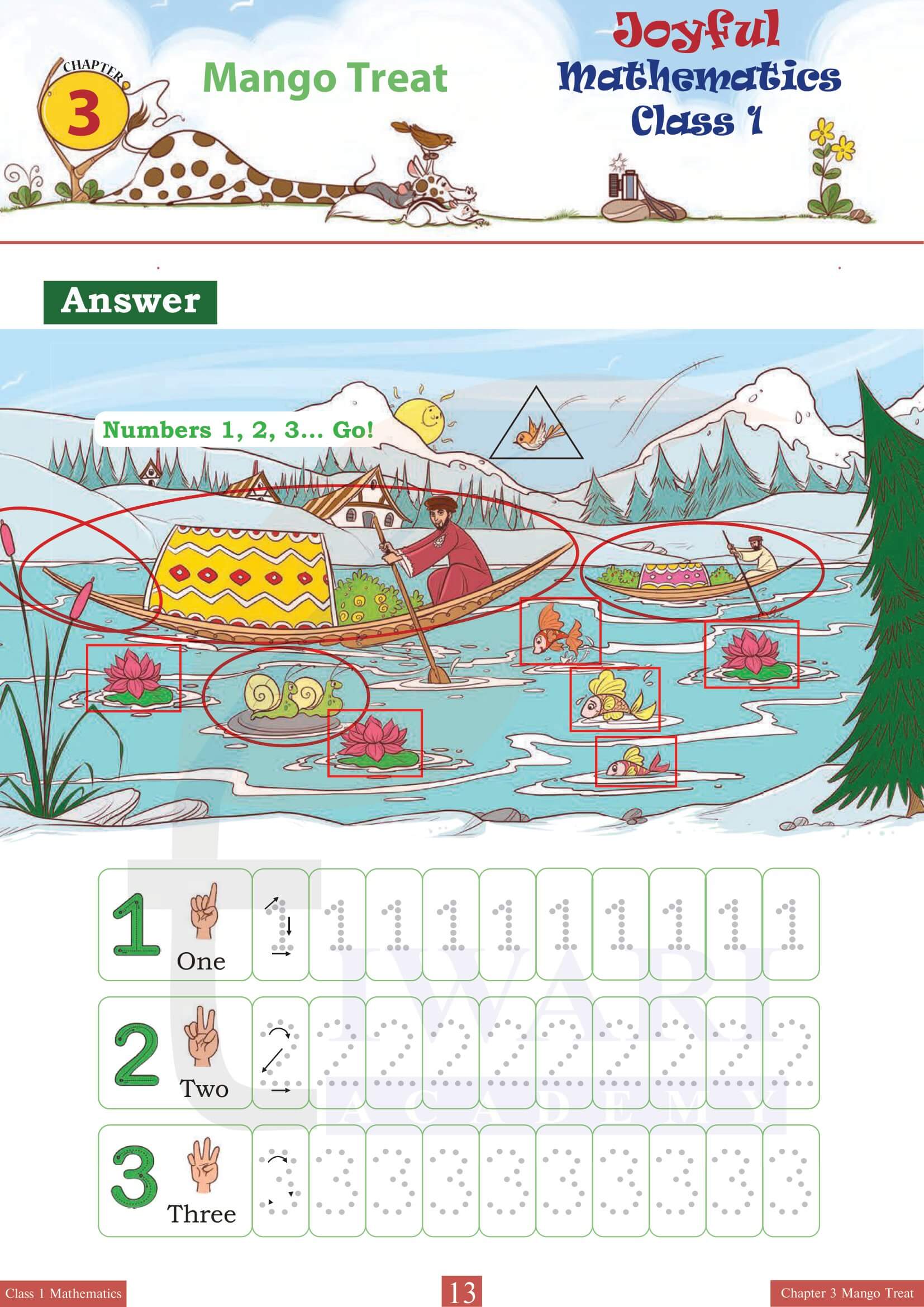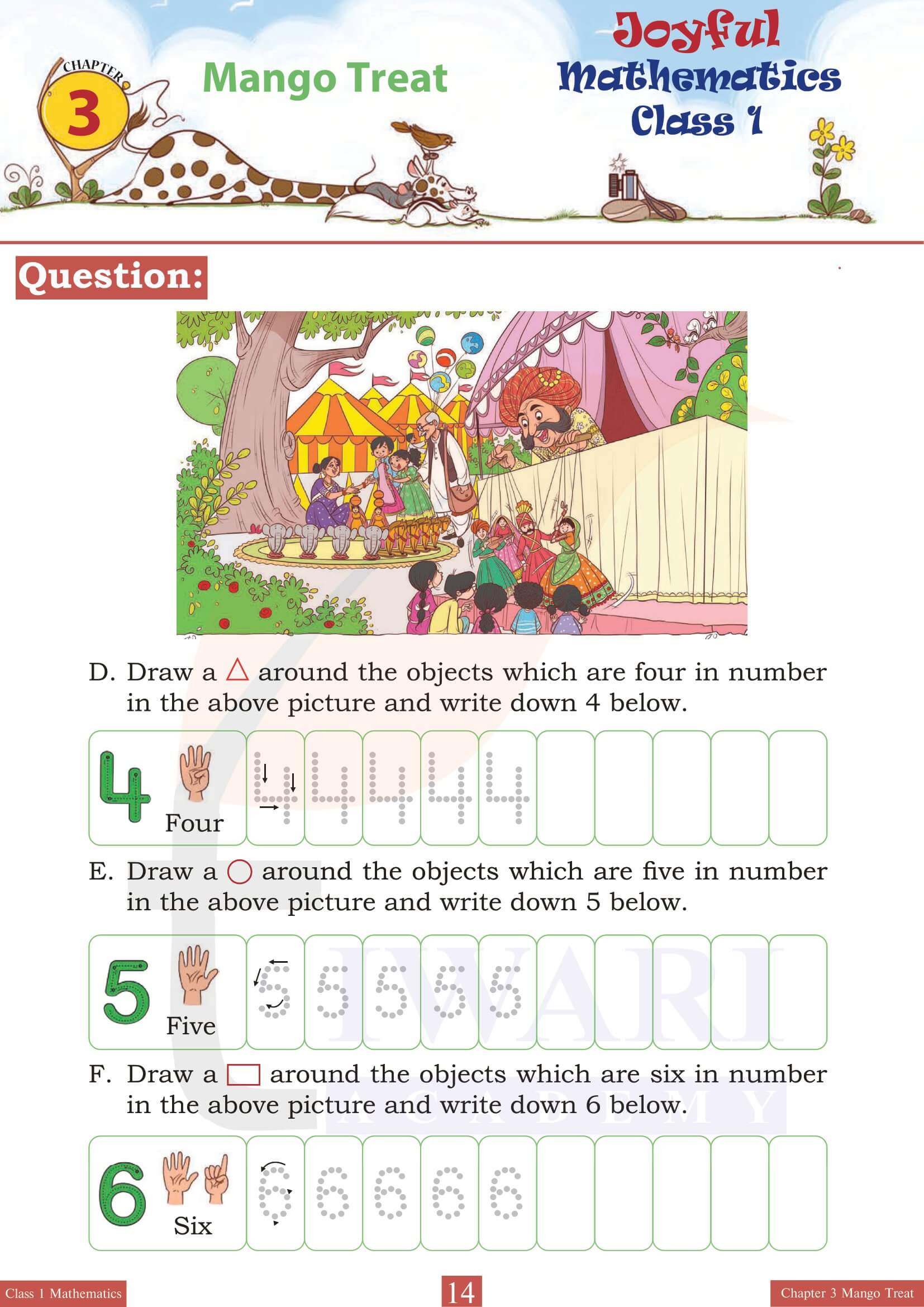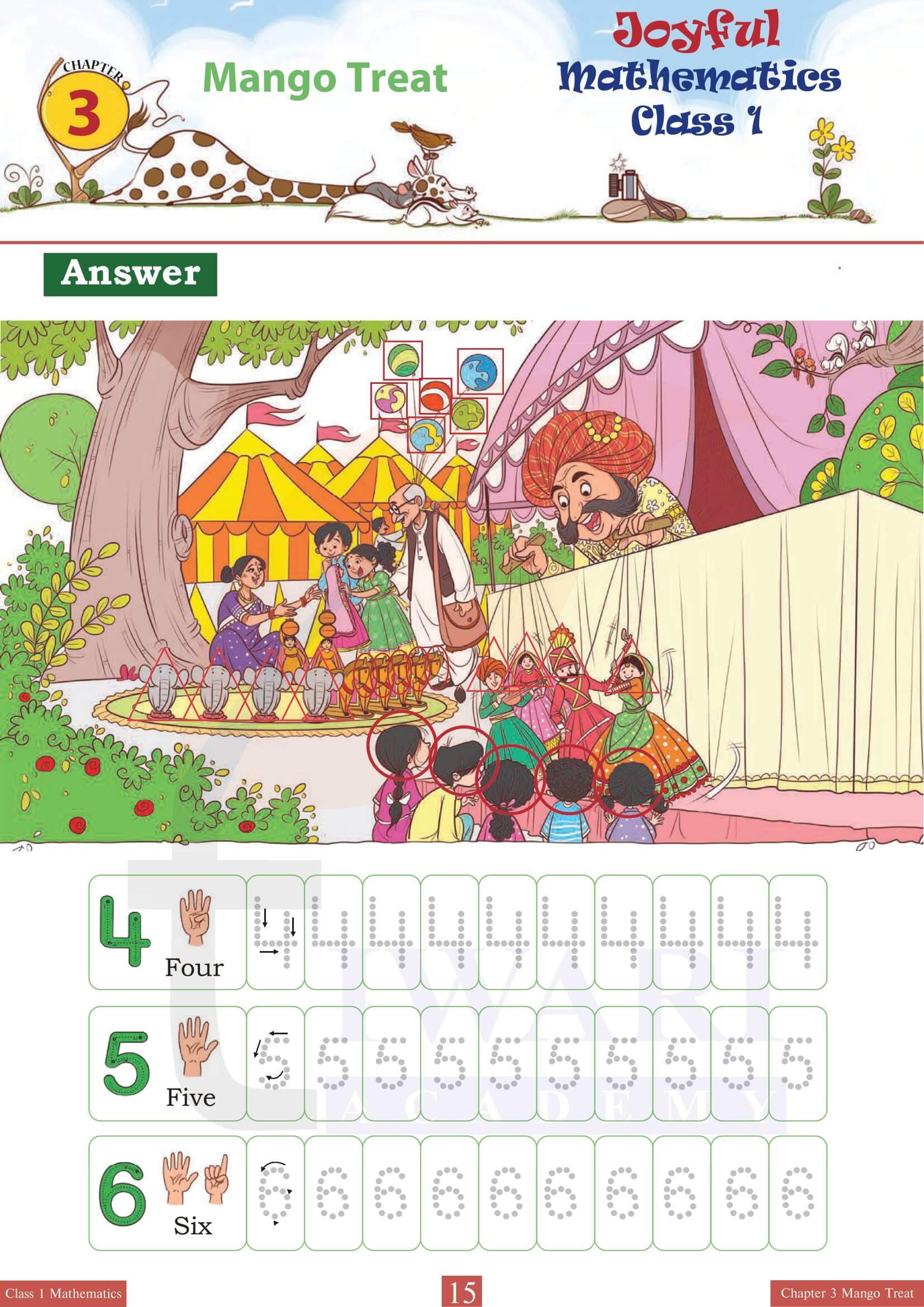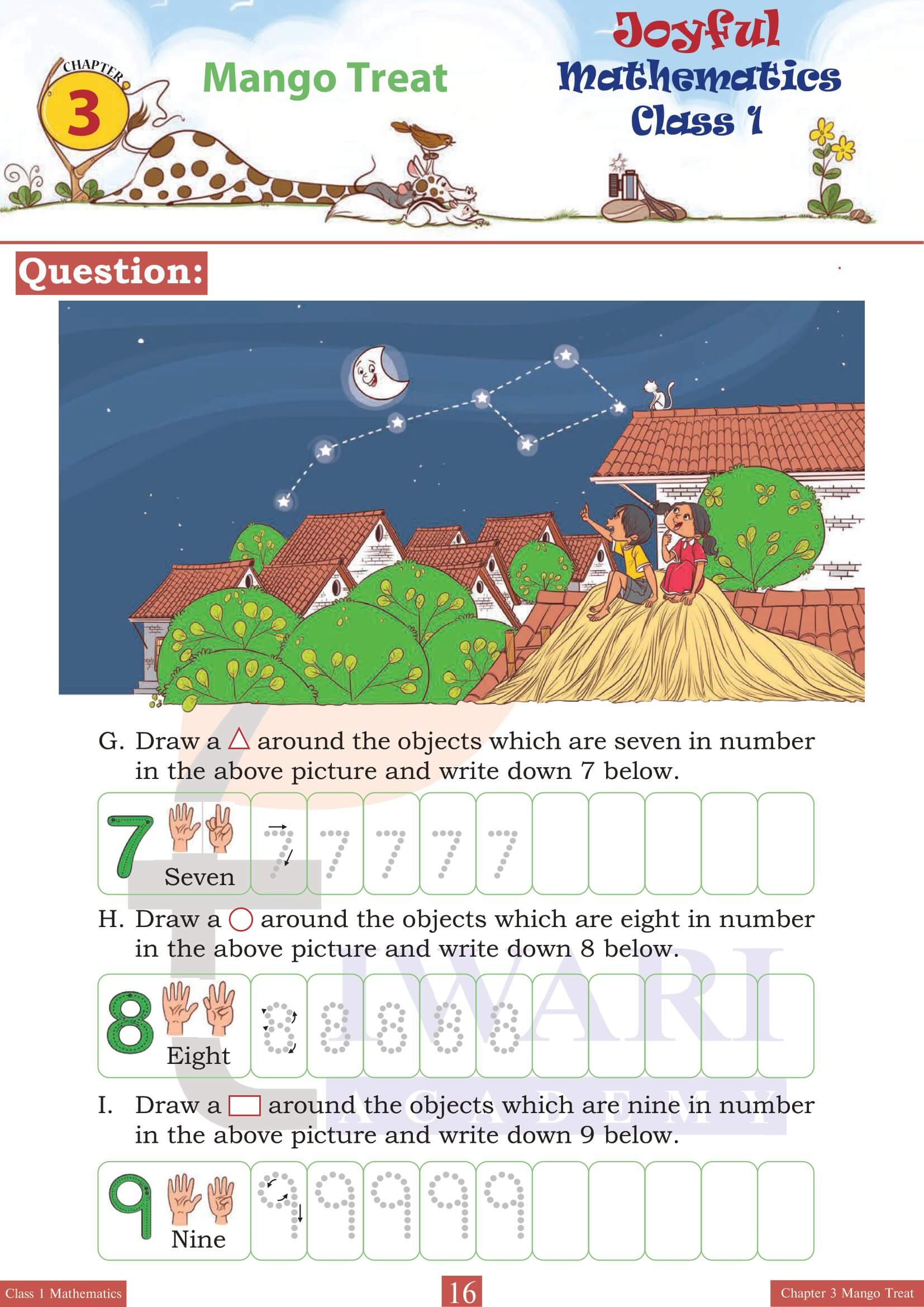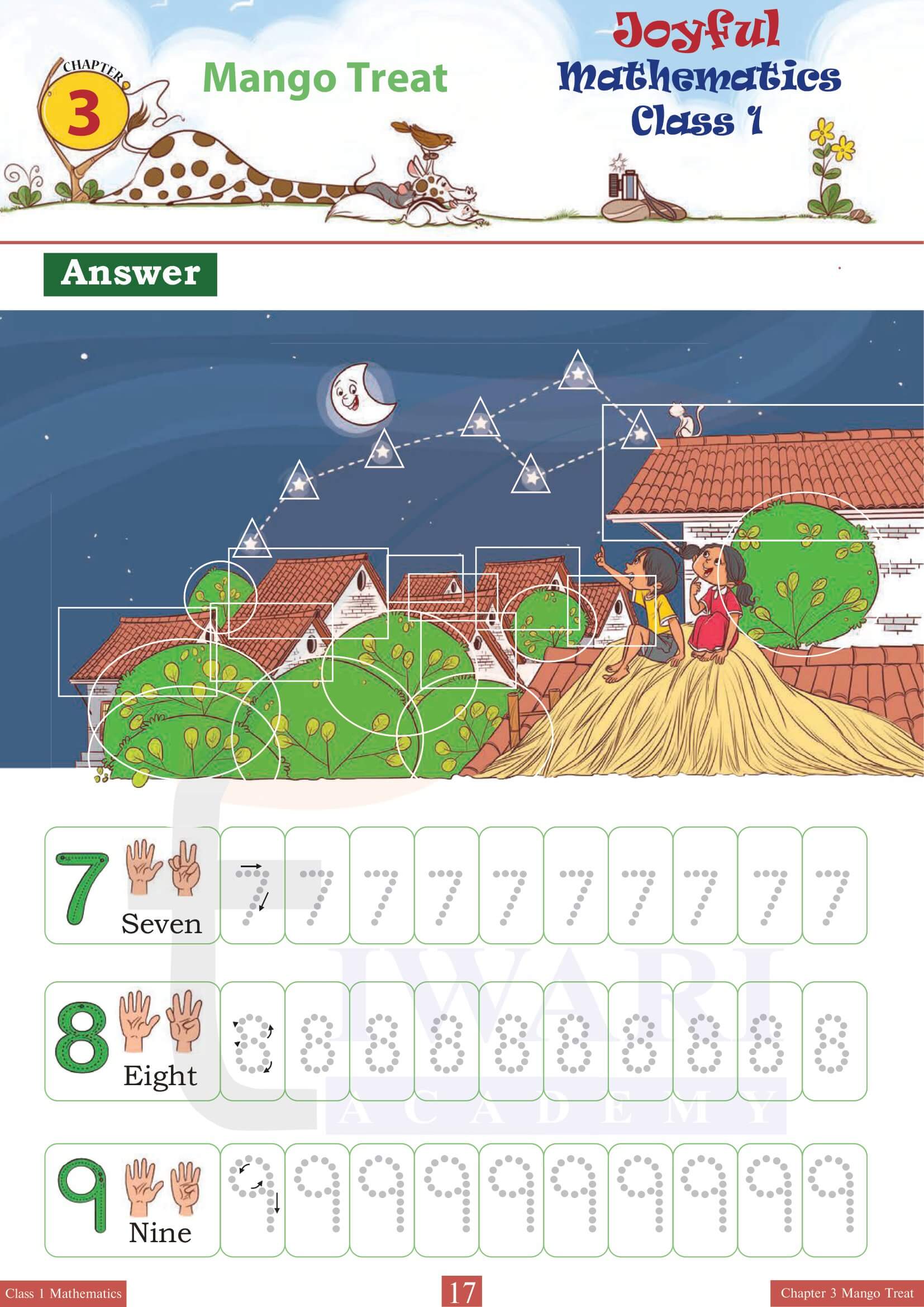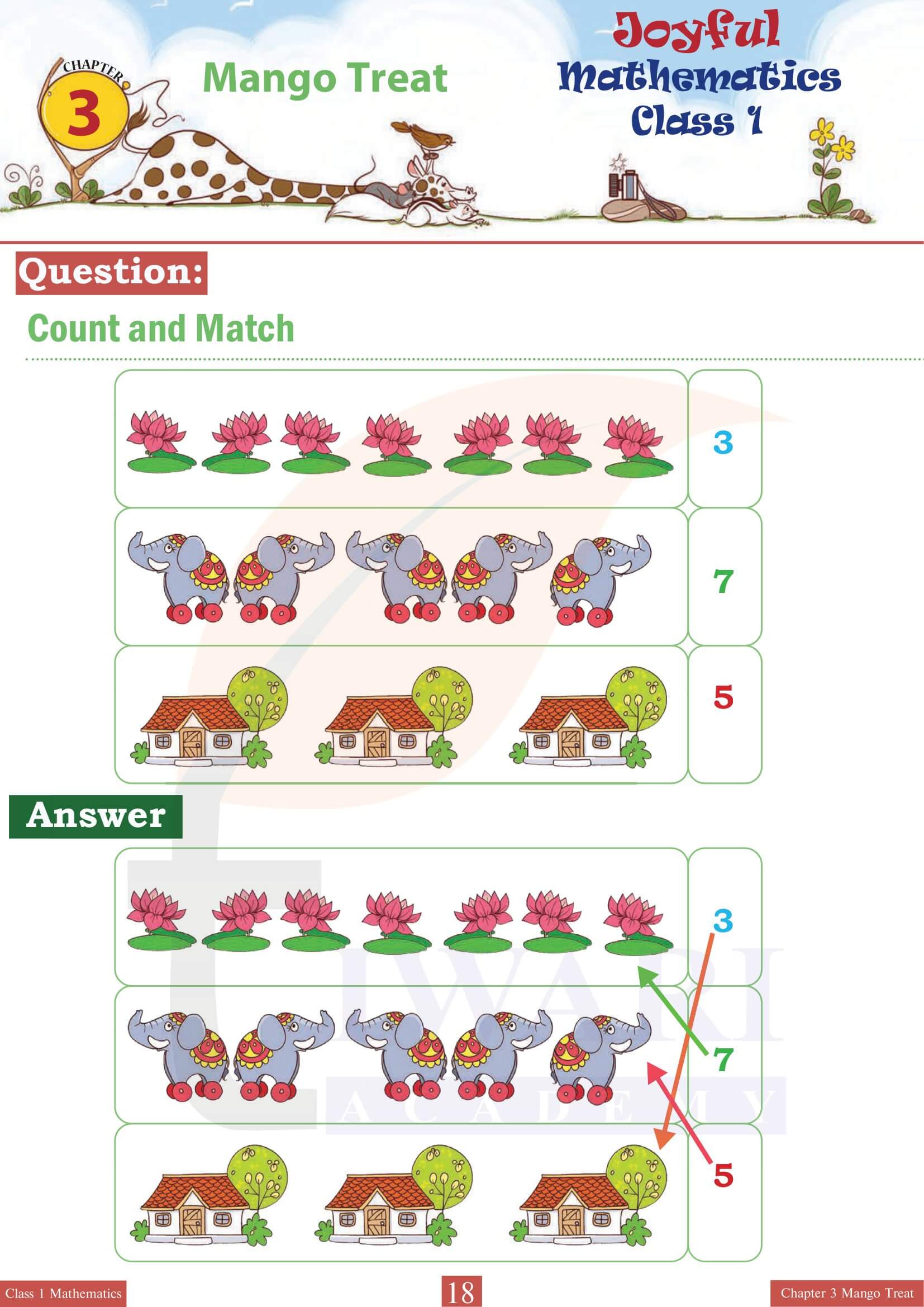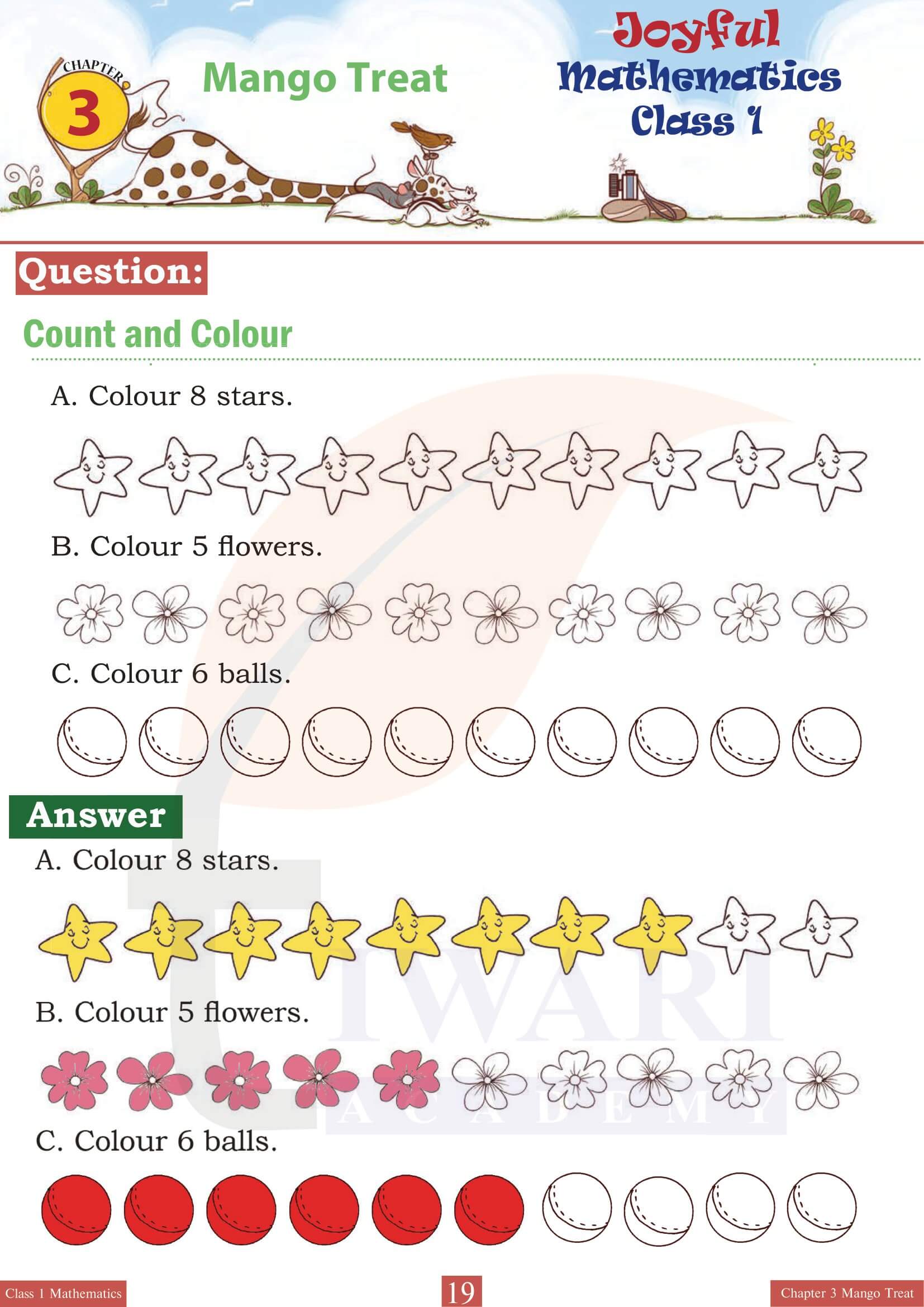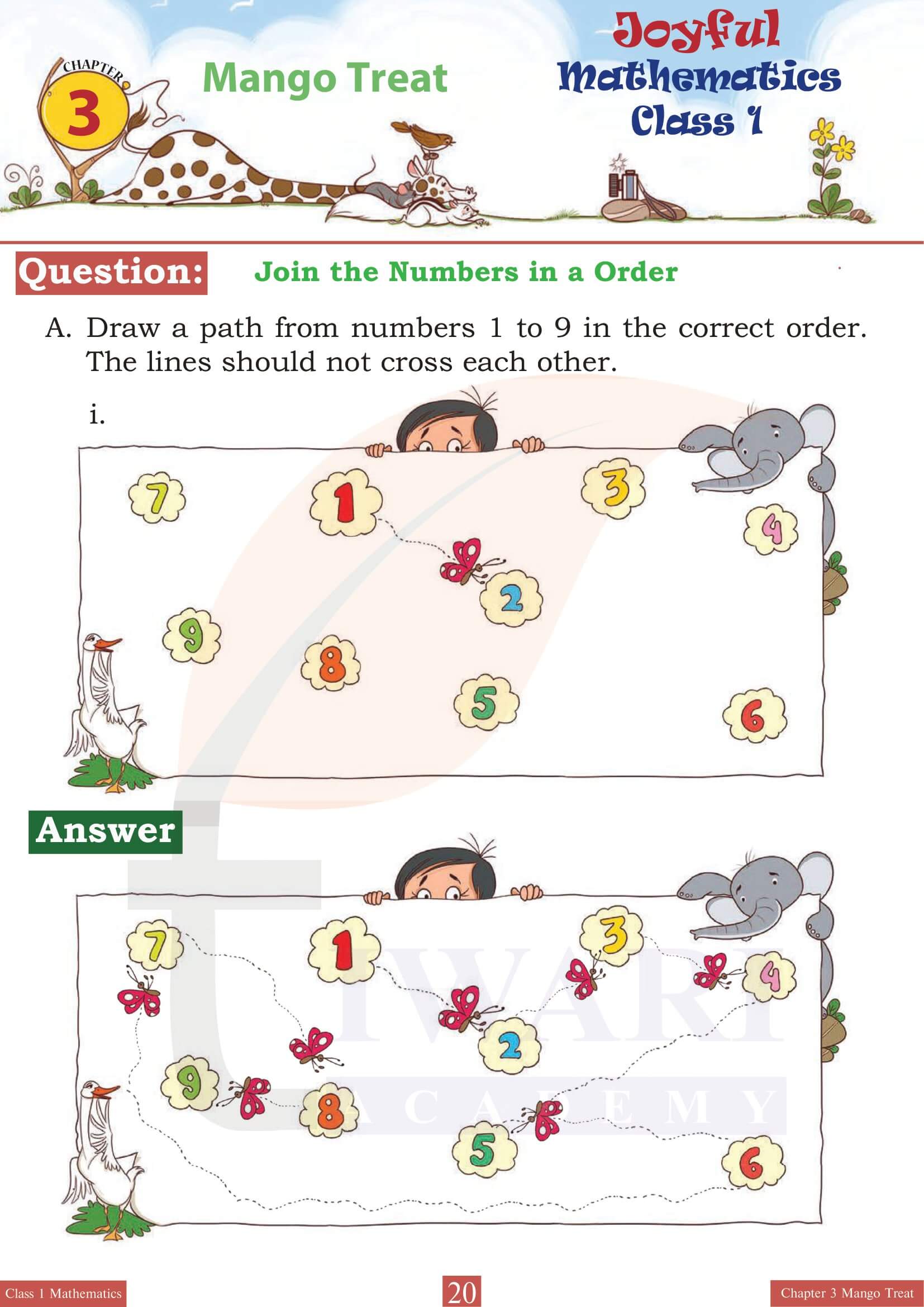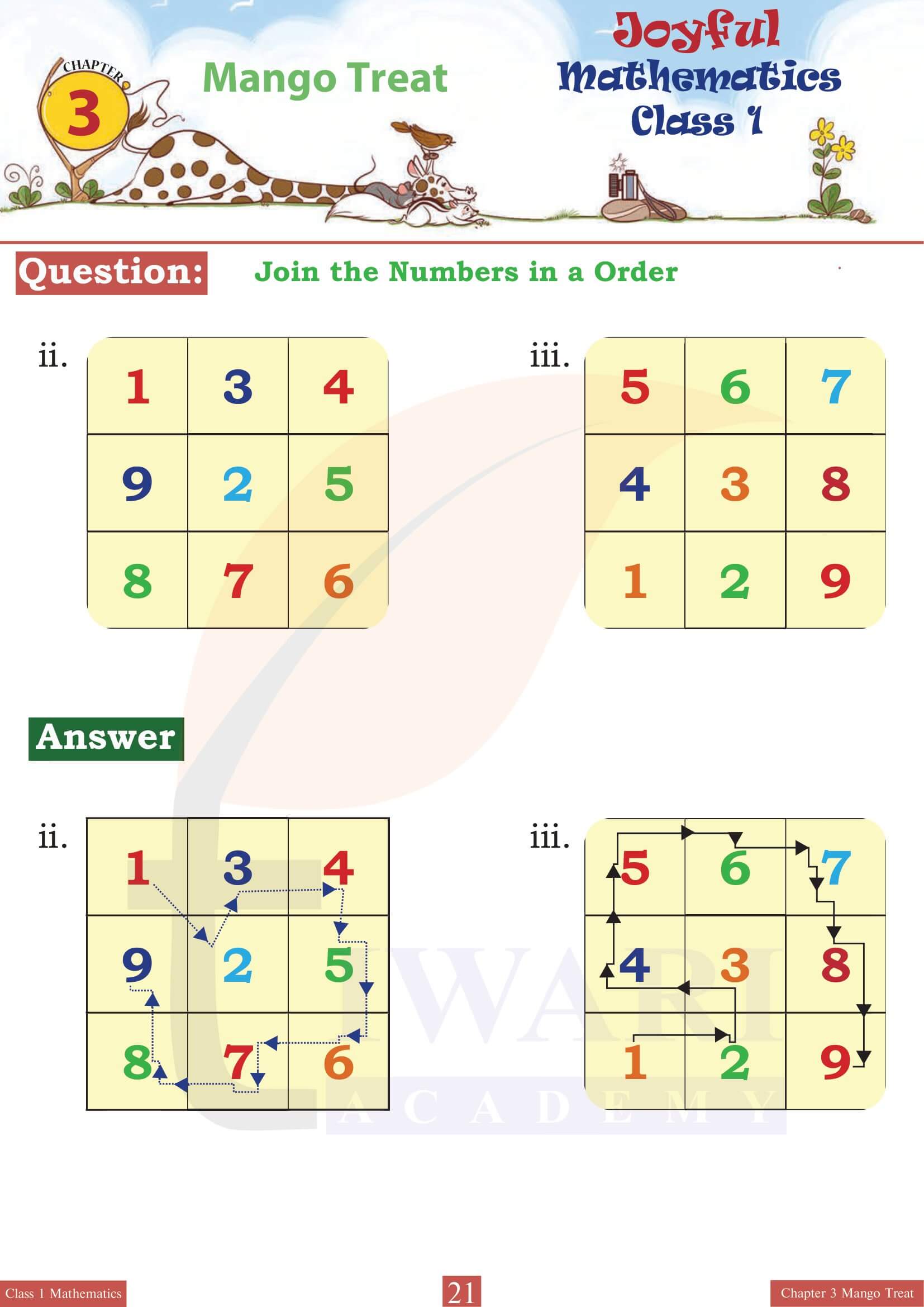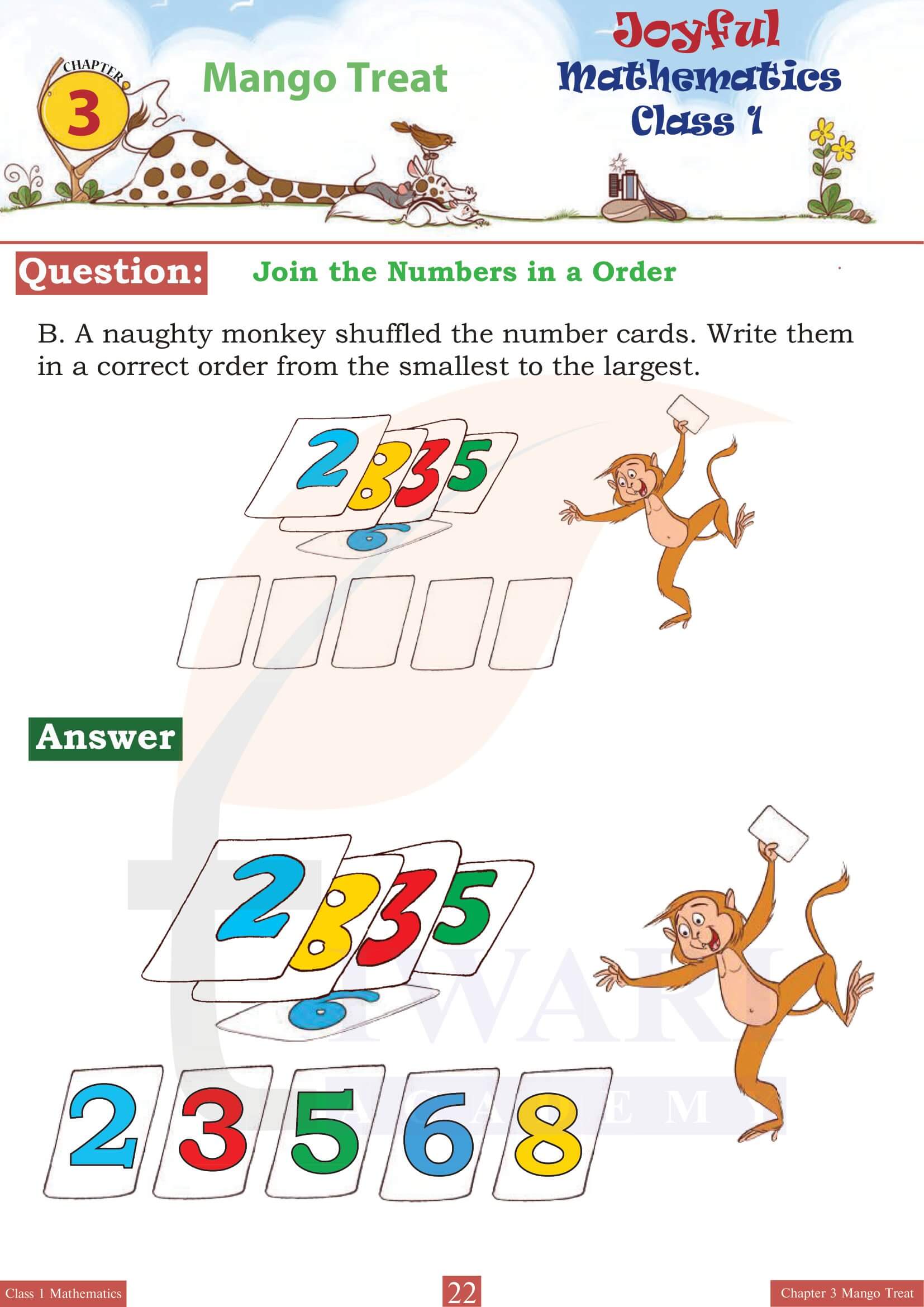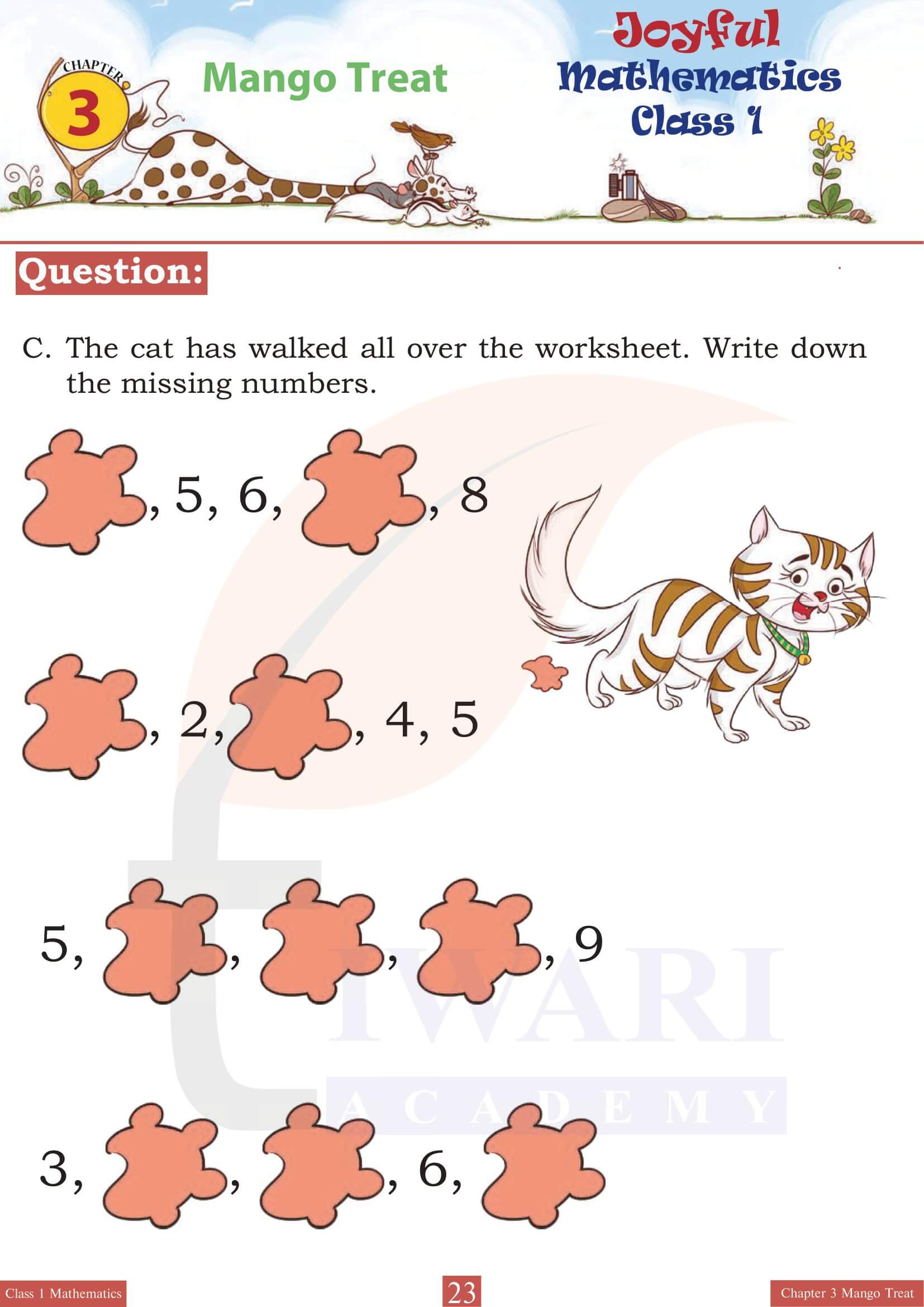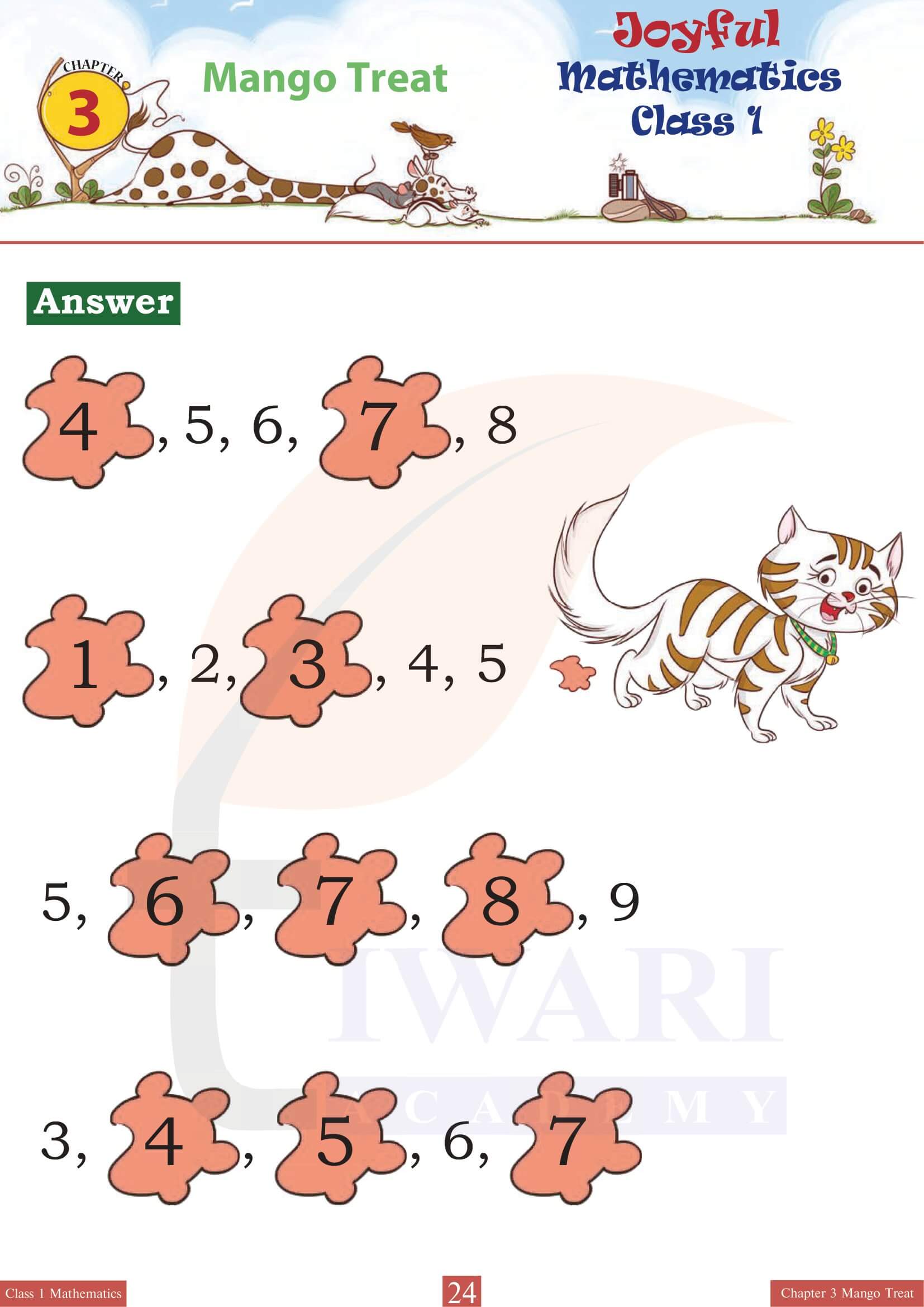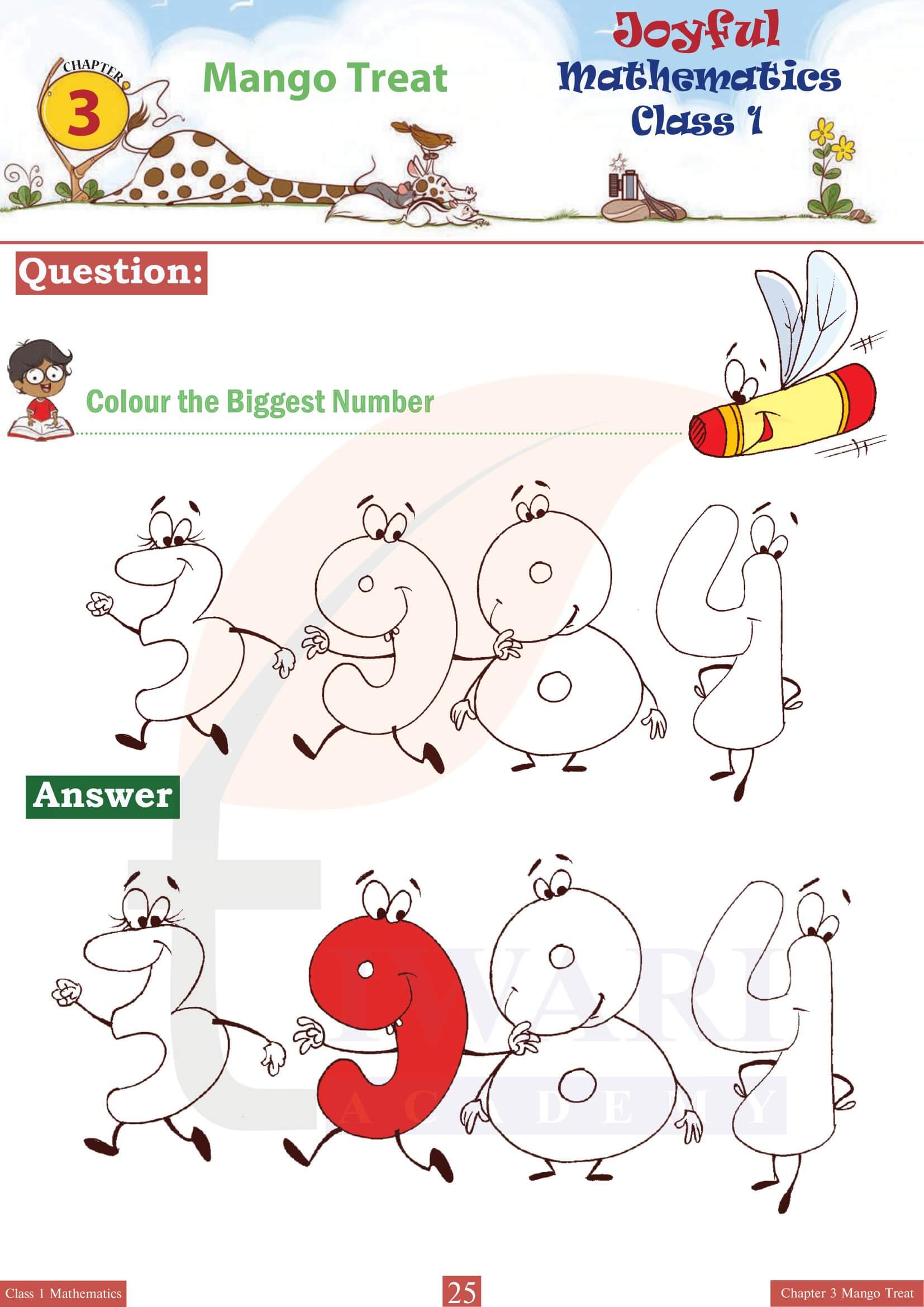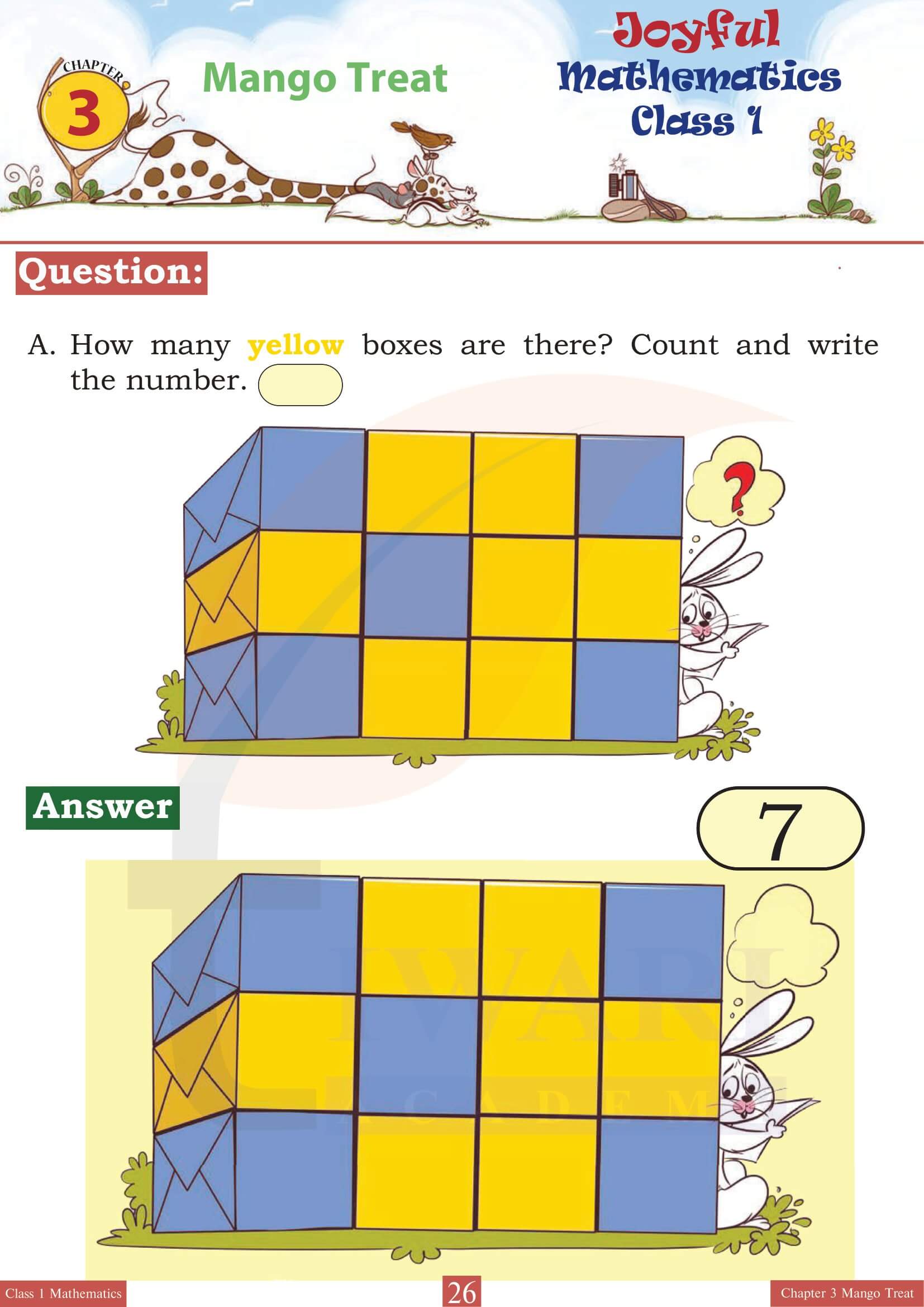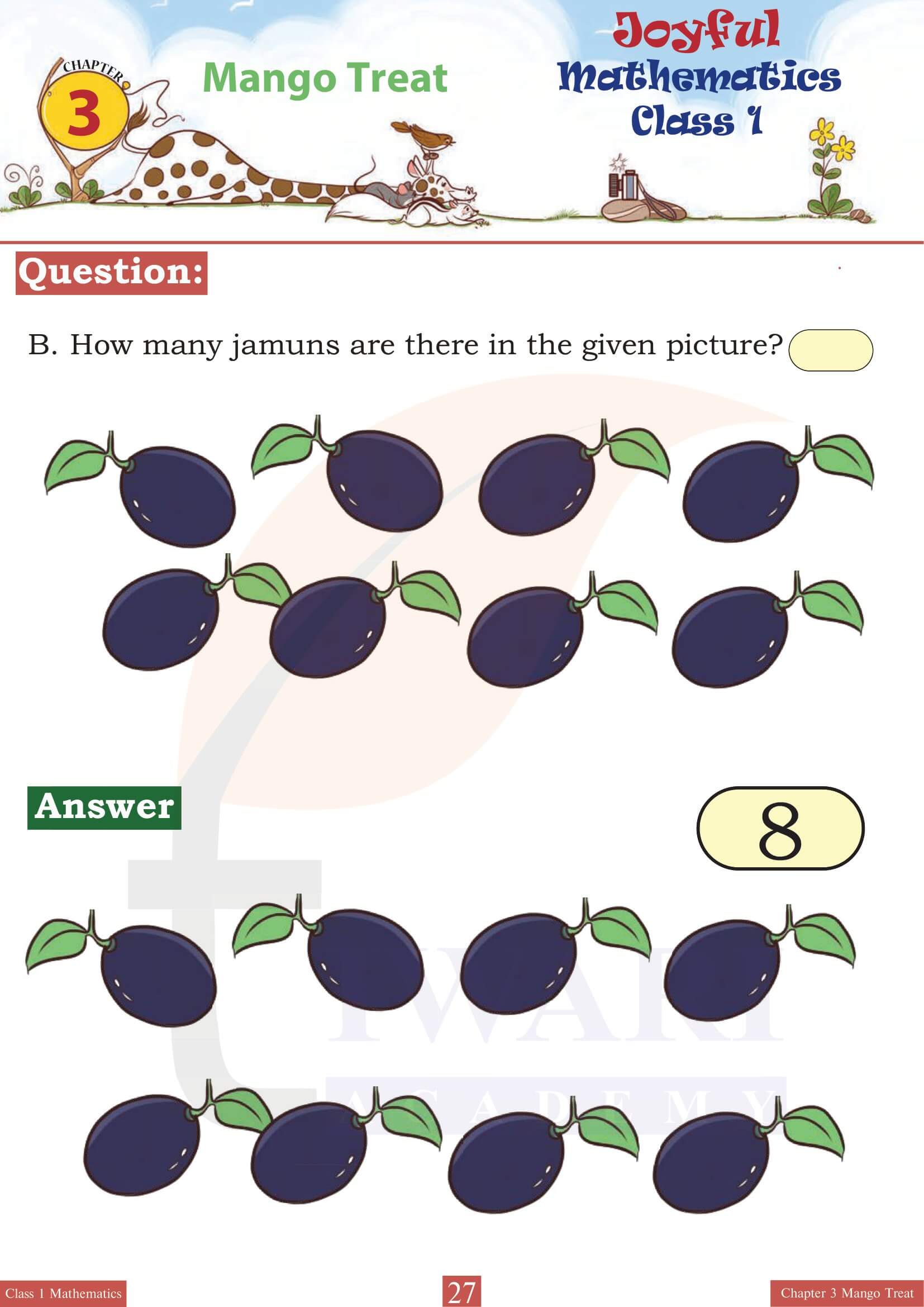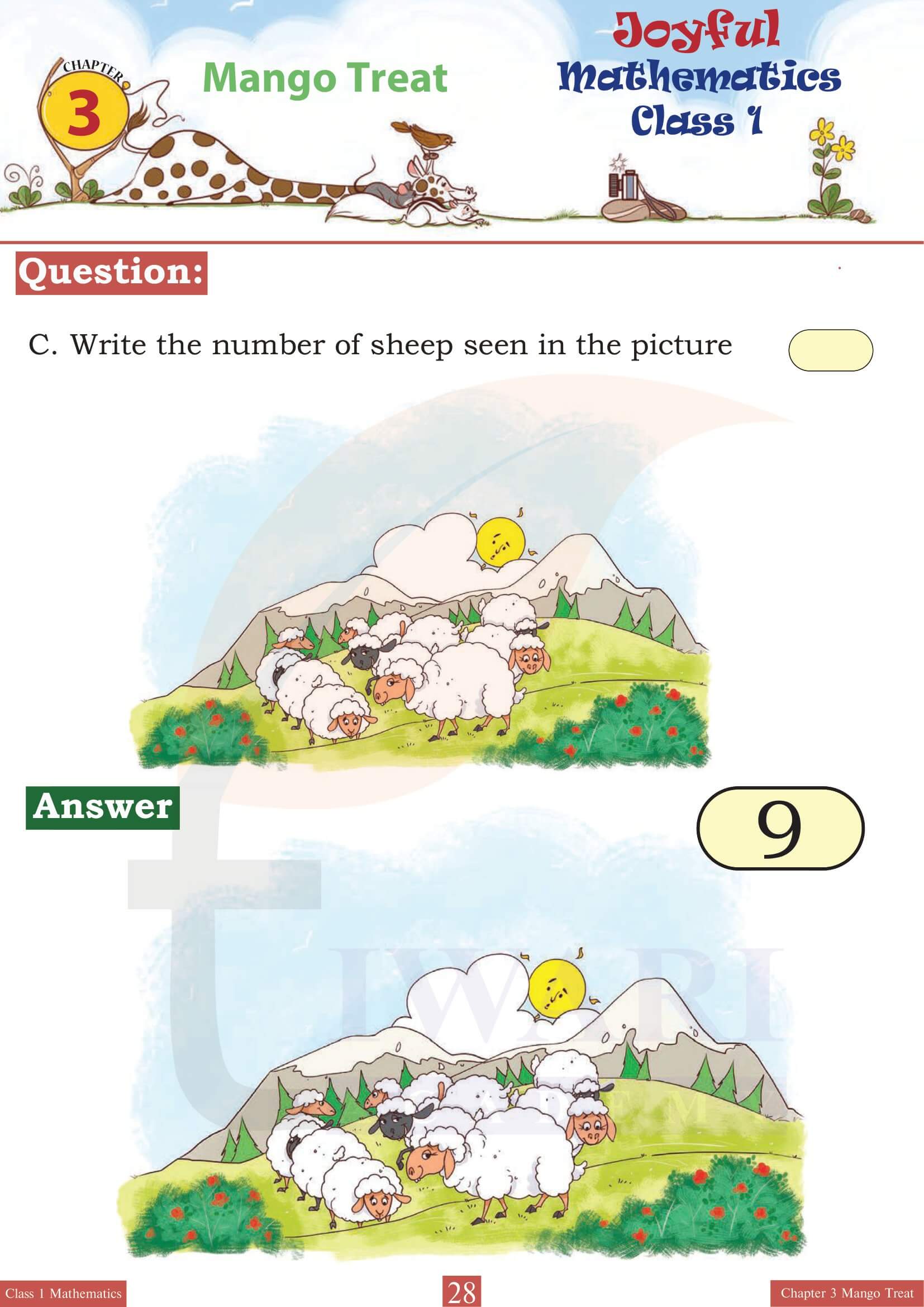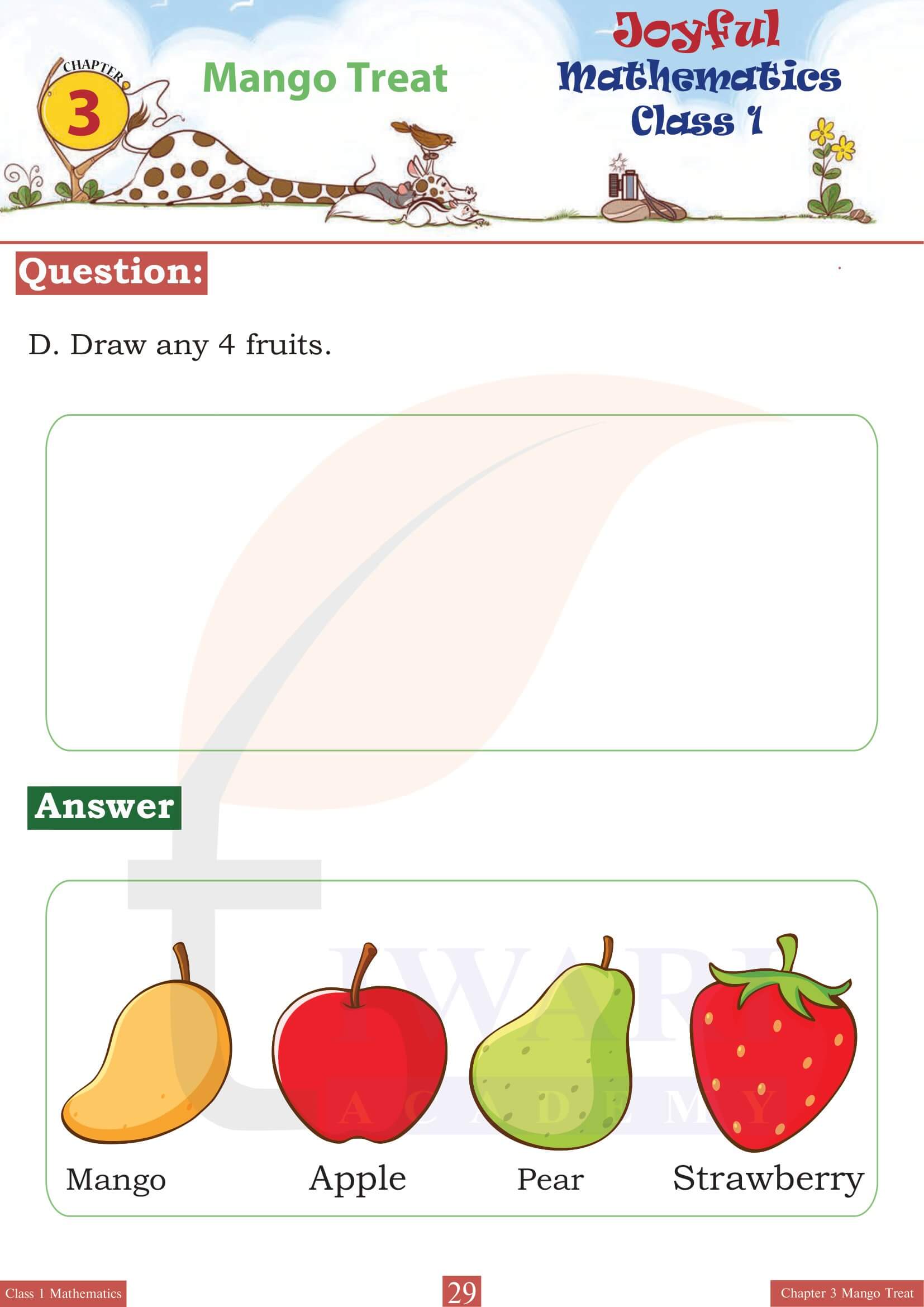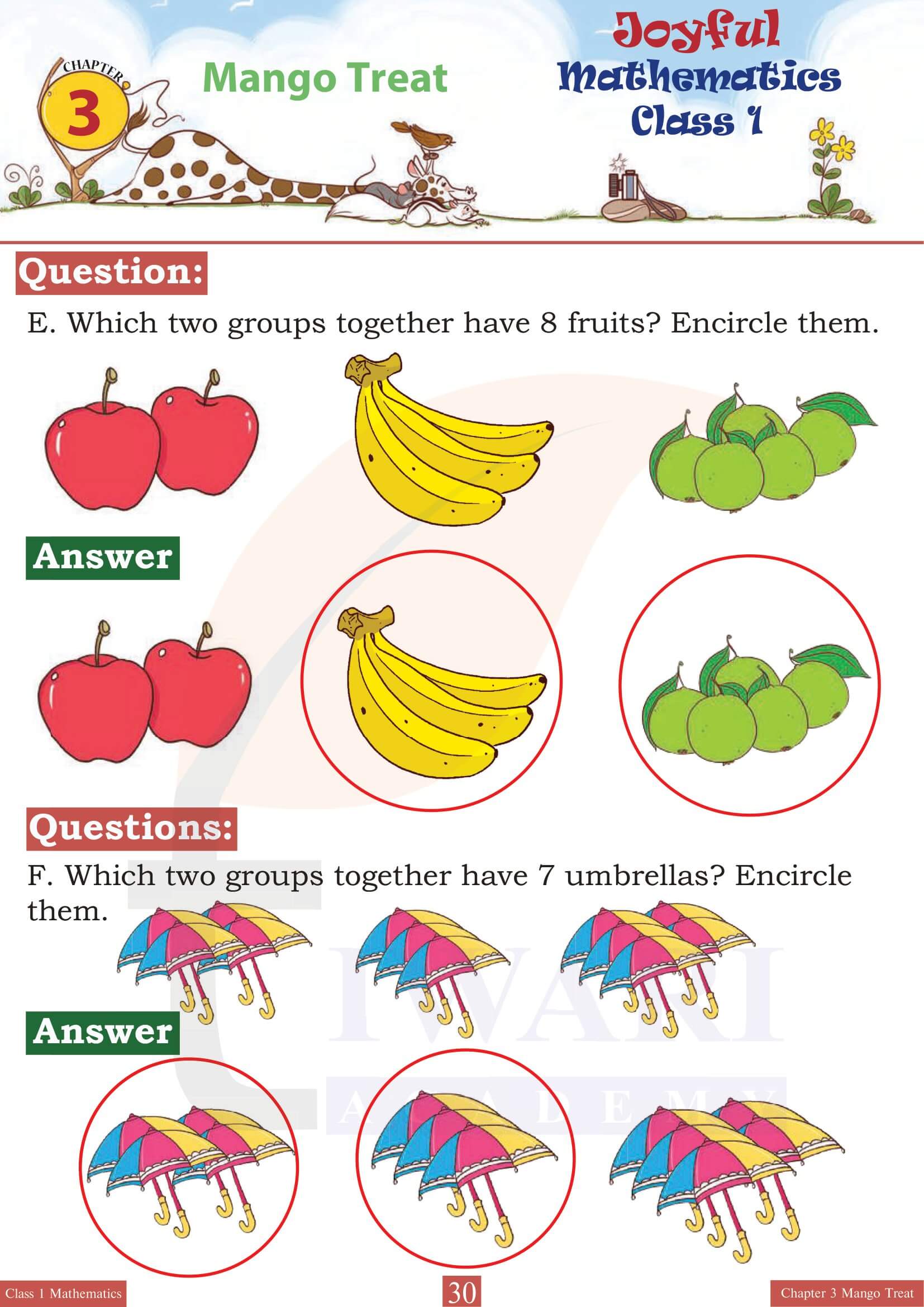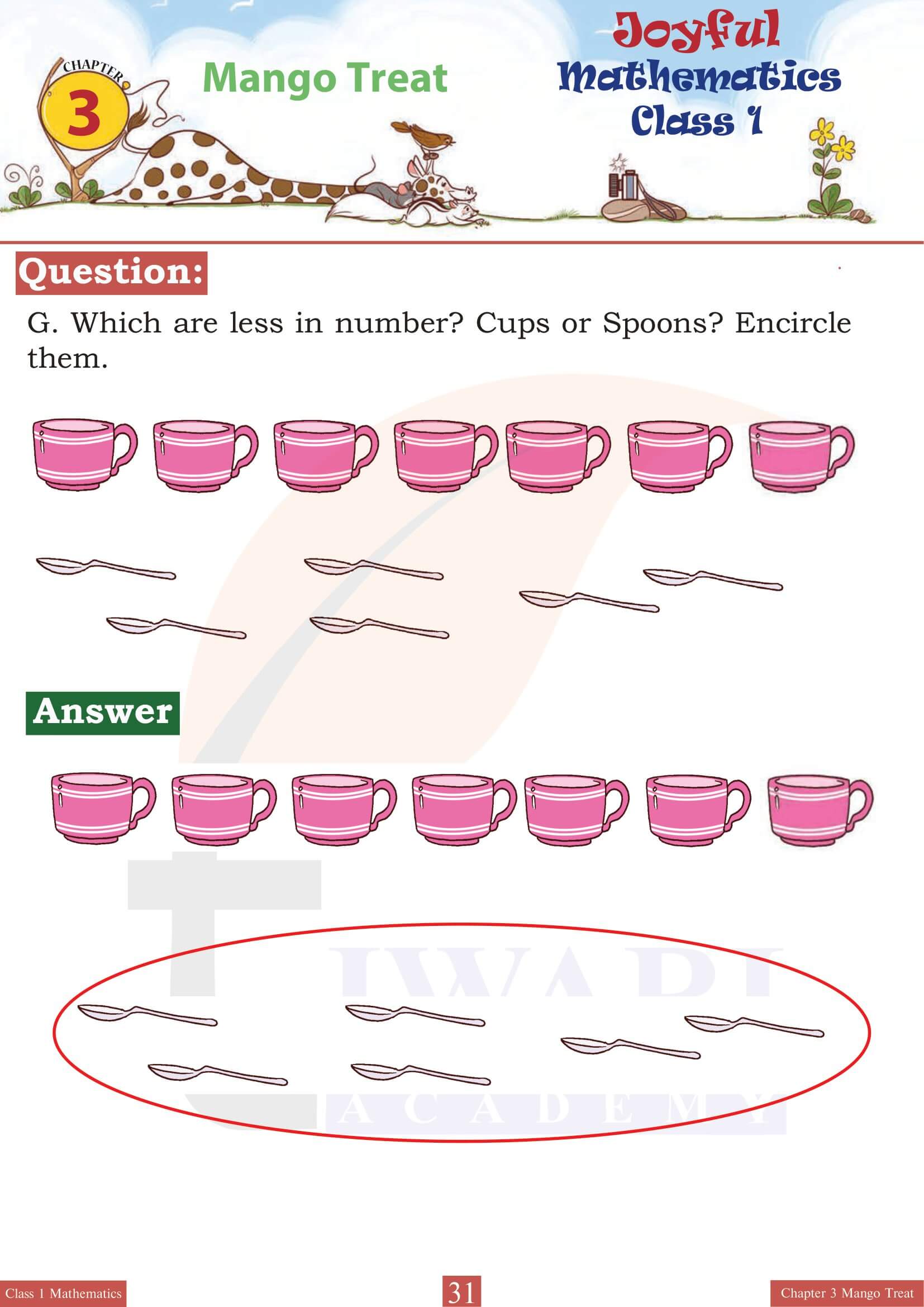NCERT Solutions for Class 1 Maths Joyful Chapter 3 Mango Treat (Numbers 1 to 9) updated for academic session 2025-26 in Hindi and English Medium revised and CBSE and State board. Students of Class 1 can get here the question answers of Joyful Maths chapter 3 in easy to learn format.
Study Tips for Class 1 Maths Exam
Concept of Class 1 Joyful Maths Chapter 3 Mango Treat
The chapter “Mango Treat” from the class 1 Maths textbook named “Joyful” is designed to introduce young learners to basic mathematical concepts through a relatable and engaging story. This chapter, like the others in the textbook, aims to make learning Maths a fun and enjoyable experience for first graders, leveraging familiar subjects and everyday situations to teach foundational Maths skills.
The narrative of “Mango Treat” revolves around a group of children and their encounter with a mango tree full of ripe mangoes. The story begins with the children’s excitement upon discovering the mango tree, setting a joyful tone that aligns with the textbook’s mission to make learning delightful. As the story unfolds, the children decide to collect mangoes, providing a natural context for introducing mathematical concepts such as counting, addition and subtraction.
Uses of mangoe to teach Mathematics
Class 1 Joyful Maths chapter 3 cleverly uses the mangoes as manipulatives for teaching math. For instance, as the children collect mangoes, the readers are encouraged to count along with them, turning an abstract mathematical concept into a tangible and interactive experience. This hands-on approach helps children grasp the idea of numbers and quantity, making it easier for them to understand and remember.
“Mango Treat” introduces the concept of addition as the children combine their mangoes to see how many they have in total. This part of the story is designed to teach children how to add numbers in a practical context, emphasizing the usefulness of math in everyday life. The narrative encourages participation, asking readers to add the numbers themselves, which reinforces the learning through practice.
Introduction of Subtraction in Natural Way
Subtraction is also introduced in a natural and engaging way. After the children decide to eat some of the mangoes, the story guides the readers through the process of subtracting the eaten mangoes from the total count. This segment not only teaches subtraction but also introduces the idea of sharing and fairness among the children, integrating social lessons with mathematical learning.
The “Mango Treat” chapter is not just about numbers; it also aims to enhance problem-solving skills. As the children face the challenge of dividing the mangoes equally, the readers are invited to think along and find solutions to the problems presented in the story. This aspect of the chapter fosters critical thinking and encourages children to apply their mathematical knowledge in solving real-life problems.
Colorful Illustrations for better Learning
To make the learning process even more engaging, the textbook includes colorful illustrations depicting the children, the mango tree, and the mangoes. These visuals not only make the chapter more attractive but also aid in understanding by providing visual cues that complement the text. The illustrations serve as a tool for visual learners, making it easier for them to grasp the mathematical concepts being taught.
At the end of the chapter 3, “Mango Treat” includes interactive exercises and games related to the story. These activities are designed to reinforce the mathematical concepts introduced in the chapter, providing children with additional practice in a fun and engaging way. The exercises vary in difficulty, catering to the diverse learning paces of first graders and ensuring that every child can participate and learn at their own pace.
“Mango Treat” exemplifies the “Joyful” textbook’s approach to teaching math by intertwining educational content with stories that resonate with young learners. Through its narrative, the chapter effectively introduces basic mathematical concepts such as counting, addition, and subtraction, making these abstract ideas accessible and engaging. The integration of mathematical learning with a story about sharing, teamwork, and problem-solving also instills valuable social skills in the readers. By using familiar scenarios and interactive elements, “Mango Treat” not only teaches Maths but also fosters a love for learning among first graders.
